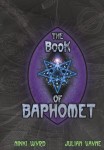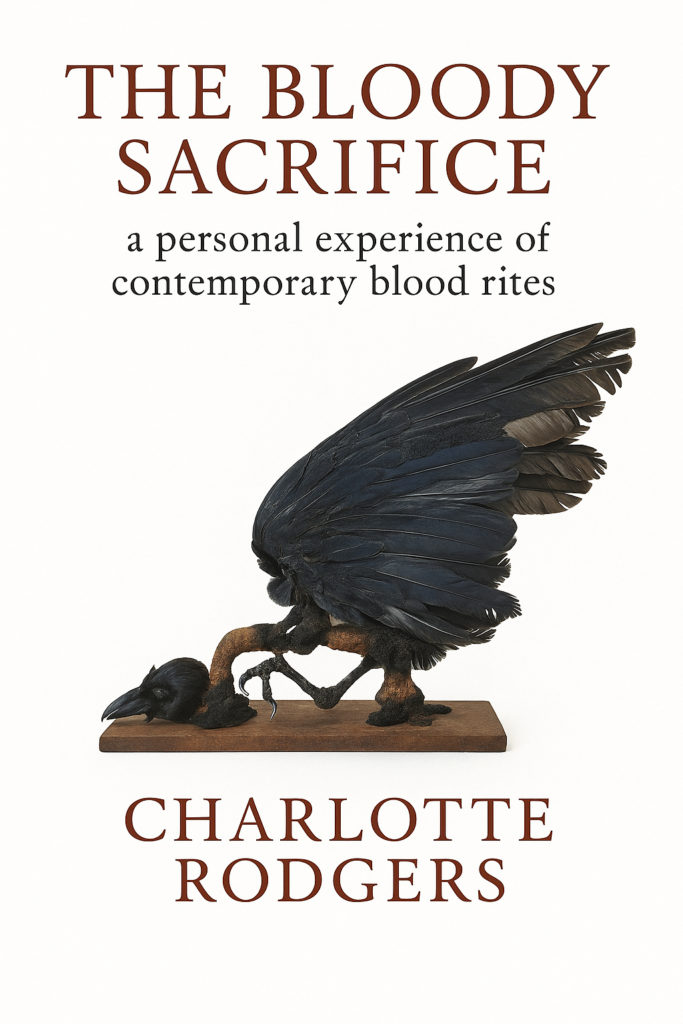
Tag Archives: magick
Epoch
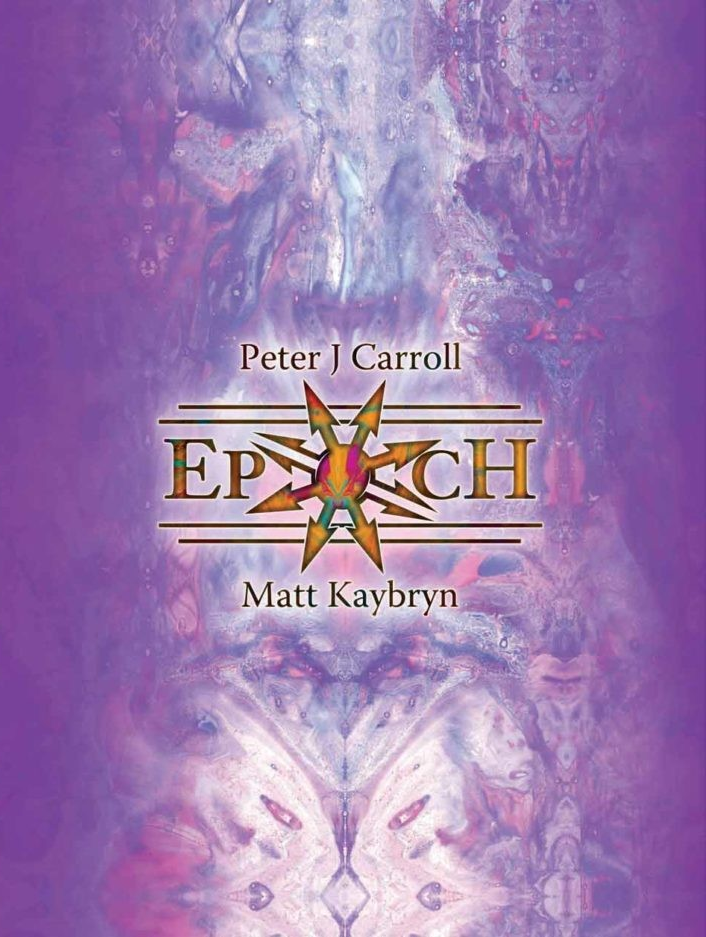
The Epoch – Hardbound Book (New Edition)
Plus Portals of Chaos Deck
By Peter Carroll and Matt Kaybryn
Rainbow Bridge
The Shakta Tantrika of the Uttarakaulas
John Power
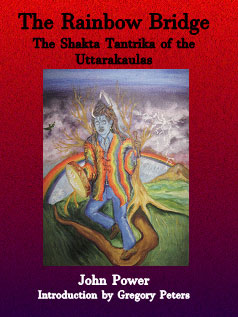
The Rainbow Bridge – The Shakta Tantrika of the Uttarakaulas
John Power
ISBN: 978-0-9542286-3-7
£15.00+p&p / $24.00+p&p
Click HERE for UK edition
Click HERE for USA & AUS
John was a student of Tantrik guru Dadaji Mahendranath [1911-91] in a correspondence that lasted from 1971 to 1991 and with occasional meetings. The last few years were difficult after Dadaji suffered strokes that affected his memory and ability to write with joined up lettering.
Dadaji was a Londoner by birth, whose maternal family included hereditary witches, and after meeting Aleister Crowley in his final years, when he was translating Chinese Taoist texts, he advised Dadaji to travel East if he wished to discover the pinnacle of mystical practices. At length, after interceding war activity, he did just that, via Australia to the far East, before settling in Gujarat, India. In so doing he did indeed bridge the range of Eastern and Western philosophies. It was in respect of this that he first borrowed the Norse image of the Rainbow Bridge when seeking to create a fusion of Eastern and Western practices.
The two main streams of activity that Dadaji was most keen to see made available to westerners came from the two main initiations he received in India: The Adi Nath lineage from Matsyendranath and the Uttarakaula Tantrik tradition of North India.
The former emerged as the Arcane Magical Order of the Knights of Shambala, AMOOKOS; the latter as the Fellowship of Uttara Circles of Kaulas, which he asked John to organise for him. Most of the contents of this book are the collected essays created as guidance for those taking initiation in the group, and others with interest.
Otherwise, John has worked as an Art teacher and therapist in schools, colleges and prisons, having achieved his Masters Degree in Jungian Psychology and Art Therapy from London University in 1982. Some of his paintings illustrate this volume.
Gregory Peters is a writer and researcher who has written about Tantra, non-duality, and the intersection of East-West spiritual practices. He is an initiate of Adinatha and Uttara Kaula lineages of tantrika, as well as Dzogchen and western esoteric orders. His latest book was the Magickal Union of East & West from Llewellyn Publications.
Journal for the Academic Study of Magic 5
JSM5
Format: Softcover
£20/US$40

Click HERE for JSM /UK
Click HERE for JSM / USA
Review of JSM 5: Journal for the Academic Study of Magic, Volume 5
The fifth volume of the Journal for the Academic Study of Magic (JSM5) continues its tradition of offering rich, scholarly insights into the multifaceted world of magic and esotericism. This edition is particularly noteworthy for its broad range of topics, which span different cultures, historical periods, and perspectives, providing readers with a well-rounded exploration of magical practices and beliefs.
Philip Jewell’s article on Flavius Josephus offers an intriguing examination of how Jewish magic was adapted to fit Roman sensibilities, shedding light on the intersection of religion, culture, and power. Dan Harms’ discussion of grimoires in the conjure tradition provides a deep dive into the practical and ritualistic uses of these texts, making it a must-read for those interested in the tangible aspects of magic.
Dana Winters’ analysis of Doctor Faustus highlights the integration of Hermetic and Cabalistic elements in Marlowe’s work, revealing the complex layers of Renaissance esotericism. Sabina Magliocco’s piece on Italian cunning craft introduces readers to a lesser-known tradition, offering preliminary but valuable observations that encourage further study.
J.A. Silver Frost’s exploration of secret astrologers operating within mainstream professions is both fascinating and accessible, showing how these individuals navigated societal norms while practising their craft. Patrick Maille’s article on martyrs, magic, and Christian conversion presents a thought-provoking look at how magic influenced religious transitions.
Kennet Granholm’s study of Pekka Siitoin provides a critical examination of the darker intersections of anti-Semitism, Theosophy, and Christianity in occult doctrines, offering a sobering reminder of the political dimensions of esoteric beliefs. Lastly, Marguerite Johnson’s exploration of sex magic in 1950s Australia offers a glimpse into the intersection of sexuality and the occult, a topic that remains relevant in contemporary studies.
Overall, JSM5 is a compelling and diverse collection of essays that will appeal to both scholars and enthusiasts of magic. It successfully bridges the gap between academic rigour and the captivating nature of its subject matter.
Upperworld
Featured
Shamanism and Magick of the Celestial Realms
Chris Allaun
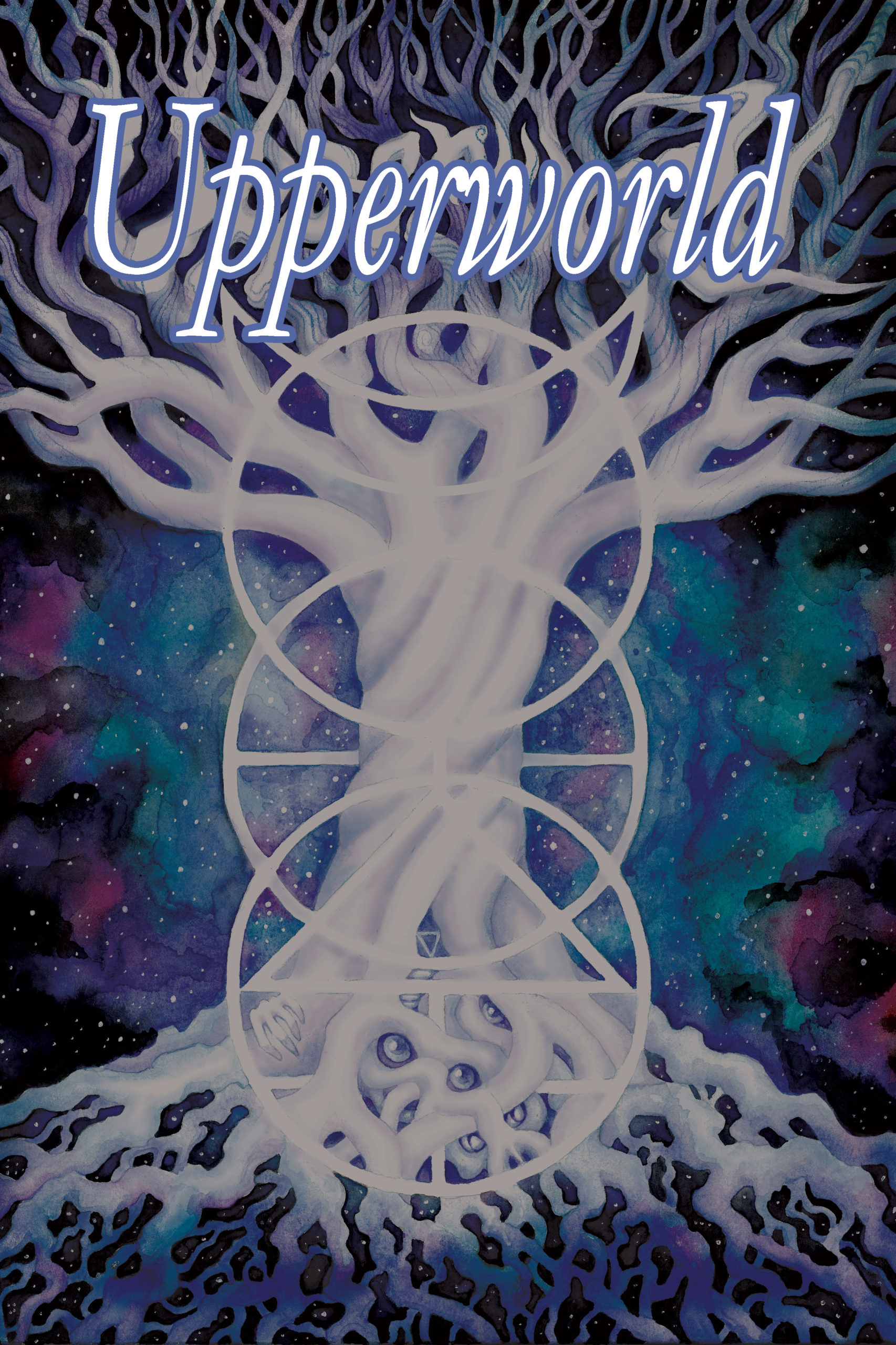
Upperworld: Shamanism and Magick of the Celestial Realms
Chris Allaun
ISBN: 978-1-906958-92-3
Format: Softcover
£15.00 / US$24.00
Subjects: Angels/Magick/Shamanism/Myths/Healing/Spirituality
Click HERE for Upperworld / UK
Click HERE for Upperworld / USA and AUS
The stars glow with their own special magick in the nighttime sky. For millions of years, the stars sent their light down to the earth. The same stars and planets we see today are the same bodies of light that ancient shamans saw around their campfires. Countless generations looked into the night sky and wondered about the magick above. It was the shamans who travelled in spirit to the Upperworlds to discover the secrets of the Universe. There are many ancient beings in the above worlds that can help us learn about the energies of the Universe and transform our lives for healing, power, and spiritual evolution.
As we journey into the Upperworlds, we will learn about the creation of the Universe and the energies that were formed from the first burst of energy and light. Shamans saw that these energies formed into powerful beings. Some called these beings angels, others called them ascended masters. Each of these beings has a divine purpose in the Universe and we will unravel these mysteries. We will learn to spirit travel into the many heavens from many different cultures. We will visit the heavens that were told to us in myths, as well as discover hidden parts of the Universe that await our arrival. We will also learn about the gods and goddesses and how to honour them in our daily magical practice. The gods are powerful and they can grant us many blessings. Through our magical practice with the night sky, we will use the magick of the stars and planets to transform our lives and the physical world around us.
“Like those before him, Christopher Allaun steals a little bit of the fire of heaven and shares it with his readers. While the underworld might be more in vogue these days, he tackles the rich lore of the heavens, and shares practical teachings that can be brought down to Earth for when you want to seek the stars.”
– Christopher Penczak, Co-Founder of The Temple of Witchcraft and author of City Magick, The Witch’s Shield and The Mighty Dead.
“Chris Allaun’s new book, “Upperworld”, is a very interesting and informative read. Consistent with his previous work, Chris focuses on the myths, legends and spiritual teachings of an eclectic mix of cultures from around the world, giving insights into their ways of viewing the “higher” realms. Chris gives information on the Shamanic worldview and the place of the Upperworld within it, detailing techniques to access and explore its various realms. Drawing on diverse sources, he not only describes the denizens of the various realms of the gods, angels, stars, planets and kabbalistic worlds but gives practical information on how to make contact and interact with them. There are rites of worship, magic, devotion, astral projection and healing that not only give an insight into the practical working of pagan, Shamanic experience but enable the reader to experience these themselves and take their own journey along the Shamanic path. This is an accessible and approachable work, both for the newcomer to the subject and the more experienced practitioner alike; both will derive benefit from reading this book.”
–Nigel G. Pearson, author of Treading the Mill: Workings of Traditional Witchcraft and The Devil’s Plantation: East Anglian Lore, Witchcraft, and Folk-Magick.
“Ancient shamans didn’t spend all their time journeying through the hazards of the underworld. They also took time to explore the heavens (or “Upperworld”), to learn the mysteries of creation, healing, and magick directly from the gods. It is refreshing, in this time when goetia is given so much focus, to see the author’s exploration of the concepts and spiritual beings of the celestial realms. Just as important, his focus upon lore, legend, and mythology in developing a true understanding of and shamanic relationship with these beings is vital, and often missed in modern Western occult texts.”
– Aaron Leitch, author of Secrets of the Magical Grimoires: The Classical Texts of Magick Deciphered and The Essential Enochian Grimoire: An Introduction to Angelic Magick from Dr. John Dee to the Golden Dawn.
Check out Chris Allaun’s news, classes, workshops and other events-
Chris Allaun: Author, Teacher, Healer
https://www.facebook.com/chrisallaun.author/?rc=p
Black Toad
Featured
Alchemy of Body, Spirit, & Stone
Ron Wyman
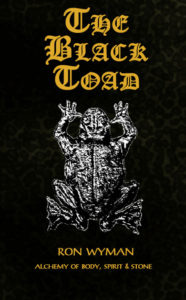
The Black Toad
Alchemy of Body, Spirit, & Stone
Ron Wyman
ISBN 978-1-906958-84-8
£15.00 / US$25.00
Click HERE for UK edition
Click HERE for USA & Elsewhere
Click here for Kindle UK Edition
Click here for Kindle USA Edition
Special offer
Get The Black Toad & The Peacock’s Egg for only £20.00 / $30.00
The Black Toad & The Peacock’s Egg Click Here for the UK offer
The Black Toad & The Peacock’s Egg Click Here for the USA & Rest offer
This book on spiritual alchemy presents an initiate’s undertaking of the internal alchemical process. It is a pathway of vision and illumination; and with particular emphasis placed on the induction of the alchemical dream, this movement becomes a visionary transition and passage.
The practitioner’s psyche moves through the paths of the Opus Magnum, and these paths have a goal—the attainment of the Philosopher’s Stone. It is the internal alchemy that acquires access to the ethereal level of the body, and eventually to the enactment of the alchemical Will.
Ron Wyman is an artist and writer living in London. His writing on alchemy stems from his own experience of the alchemical dream process and its related effects. through his background in philosophy he has brought this into a methodical format for the occult practitioner, or for anyone interested in the transcendental effects of internal alchemy.
Deeper Into The Underworld
Featured
Death, Ancestors & Magical Rites
Chris Allaun
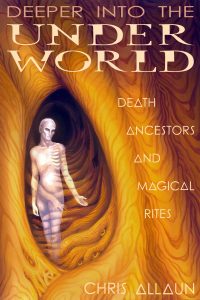
Deeper into The Underworld
Death, Ancestors & Magical Rites
Chris Allaun
Format: Softcover
ISBN: 978-1-906958-82-4
£15.00 /US $24.00
Subjects: Shamanism/Magic/Healing/Afterlife/Death Customs/Spirits Communication/Spirituality.
Deeper into the Underworld we go…
The Underworld is home to our beloved ancestors, those who gave us our flesh and blood and our breath. Their blood flows through our veins and contains great magick and power. They have the ability to help us heal old karmic wounds of the past and aide us in our spiritual development. They can teach us many things about the world of spirit. All we have to do is honor them. All we have to do is call to them.
The cycles of Life are sacred to our pagan and magical cosmology, but what of Death? As we honor life, so, too, must we honor the sacredness of death and dying. As we go further in our Underworld studies, we will learn about the Angel of Death and energetic process of dying. Death is not the end. It is a magical transition into the world of spirit where we are rejoined with our beloved ancestors. The Ancestors are our link to our past. We will learn to honor them and create a sacred shrine so that we may commune with them in a magical and healing way. By honoring the ancestors, we will strengthen our bonds with the spirits and learn to heal our family karma that began long ago and affects us even today.
By learning to work with the ancestors, we will learn to work with the spirits of the dead for magick and healing. We will learn how ancient cultures summoned the beloved dead to heal grief and say final goodbyes. We will also learn magical techniques to summon the shades of the dead and the Hidden Company; those powerful spirits that can teach us ancient wisdom of long ago that can help us tread our spiritual path to find balance and healing.
Click here for Kindle UK edition
Click here for Kindle USA edition
Read Alanna Wright’s review of Deeper Into the Underworld: Death, Ancestors and Magical Rites, published in Spiral Nature Magazine
www.spiralnature.com/reviews/deeper-into-underworld-chris-allaun/
Deeper Into the Underworld: Death, Ancestors and Magical Rites
by Chris Allaun
Mandrake of Oxford, 9781906958824, 203 pp., 2018.
”Chris Allaun has released Deeper Into the Underworld: Death, Ancestors and Magical Rites as a follow-up to his first book Underworld: Shamanism, Myth and Magick. In this book, Allaun brings to life, or rather life after death, the powerful practice of ancestral spirit worship and highlights the immense spiritual benefits that come from learning to commune with the deceased. The theme of death runs strong through the book yet Allaun has presented the material in such a way that allows the reader to open to the power of Underworld forces in much the same way as shamans, witches, and magicians have for countless centuries — with the knowledge needed to access this realm, courage to face the reality of death and wisdom to tap into the spiritual power of this domain.
Written in a very straightforward and easy-to-read style, Allaun provides the reader with real-life experiential advice on how to work with ancestors as part of their magical practices. He explains,
“Honoring the dead is one of the most important parts of spirituality. We often honor our gods and goddesses and even nature spirits, but sometimes forget the most important spirits to honor; our beloved dead. Our ancestors are our family. They are our grandmothers and grandfathers and our grandmothers and grandfathers before that. They hold an energetic and magical link to us. We may not realize it, but there is a current of power that goes from us to our ancestors and from them back to us. It is strong. It is powerful. Is it the bond of family.”
In no way does Allaun skimp on ideas for how to establish and strengthen this connection to our ancestors. He offers a variety of methods that can be easily incorporated into one’s magic to help the reader open the channel to commune with their ancestors. Detailed is the way to set up an altar, created sacred space and maintain a daily devotional practice to honour loved ones who have passed on. Allaun highlights the importance of sustaining an ongoing relationship with our ancestors, rather than only honouring them sparsely through the year, as the way to truly bring them into your home and spiritual life. In this way, we can begin to communicate with our ancestors about day-to-day happenings and this in turn provides nourishment for them and us alike.
The reader is reminded this is not a one-way relationship as our ancestors benefit too from our offerings to them in the Underworld. Allaun explains, “On an energetic level, what is happening is that our prayers open our minds, energies and our spirits to our Ancestors and higher beings to establish a strong and powerful connection. Through the connection we make with the spirits, they are able to use this energy and power to help our Ancestors evolve to a higher state of being.” Later in the book, Allaun ties in how we also carry ancestral patterns that we can transmute and heal by working with ancestors in the Underworld directly.
Beyond ancestral knowledge, this book is a rich resource for information on death rites, rituals, and cultural perceptions of death that have been carried through the ages. Allaun provides insightful understanding of the way death is portrayed today in comparison to how cultures of the past understood working with the Underworld, death, and the ancestors. These include pages on Egyptian embalming and also the Eleusinian Mysteries of Ancient Greece. By going back in time, the reader comes to understand how human’s cultural relationship to death has been worshipped, revered, and also feared throughout time.
Throughout the book, Allaun provides many mythological stories that highlight the importance of the Underworld spirits and knowledge of how to navigate this tricky realm. These include the story of Baldur’s dreams in Norse mythology, Those Who Come From The Mountains in Japanese and Shinto mythology and Asclepius and Diana bringing back the dead in Greco-Roman mythology. Allaun does an outstanding job of providing many cross-cultural narratives involving death, so the reader has a widened perspective of a variety of spiritual understandings of the Underworld. This includes a passage of the Ghost Dance of Native Americans from the Plains region of the United States, where they were able to perform this dance to summon their ancestors and gain a personal sense of empowerment through the connection.
In sharing his personal experience, Allaun works to dissolve the fear commonly associated with death and the Underworld. A fantastic aspect of the book is the fascinating meditations provided that can be applied in a ritual setting to gain insight into the energy of death, access the Underworld, and work with ancestors. These meditations include performing a eulogy at your own funeral, graveyard meditations, tracing back family karma through lineage, and connecting with ancestors in dreams, and tapping into the blood. For those who practice traditional witchcraft, Allaun includes a ritual to connect with the Hidden Company to seek their spiritual knowledge and also Ritual of the Rose Castle to connect with the Goddess of Death.
Allaun focuses on sharing with the reader how the misconception of working with the dead became linked to evildoing with rise of Judeo-Christianity. Yet, he is honest about the association that has existed between necromancy and black magickdea intended to harm others. While he does not advocate using ancestors or magical connections made to the deceased in this way, he does acknowledge the existence and possibility of the misuse of spiritual power, which include bringing the dead back to life.
Above all, Allaun maintains that it is of the utmost importance to treat the dead with the kindness the reader would show any guest in their home. This means being welcoming and never making unfair requests. While the ancestors can be strong magical allies, Allaun makes it clear that we should never force our ancestors to do things for us. It is important that honour is always maintained, as the spirits can communicate, and being disrespectful towards an ancestor could hinder future relations.
The information in the book covers what the reader would need to know on all fronts to begin establishing a spiritual connection with their ancestors. Allaun stresses the importance of carefully selecting the spirits with whom you share energy. He acknowledges that certain spiritual entities many want to ask favours or cling on to the reader in order to gain energy. While this does not always happen, Allaun has given the reader techniques that can be used to make sure the reader remains protected and the sacred space clear of unwanted energy. The information provided includes numerous measures of protection that range from simple techniques to create clear energy to elaborate banishing rituals. It is obvious that Allaun has the reader’s interest at heart and wants to provide the most honest and accurate account of the possibilities that can emerge from working with the energies of the Underworld to ensure the reader is prepared.
There are only a few downsides of note in regard to Deeper Into The Underworld. The first being quite a few spelling and grammatical errors scattered through the book that can be distracting. The other is that there is no reference section or bibliography provided, leaving the reader to research and verify the information themselves.
Overall, Deeper Into The Underworld: Death, Ancestors and Magical Rites is a great read for anyone who feels a connection to working with the deceased. There is much to be gained from tapping into the Underworld and bringing the wisdom of our beloved ancestors into the physical realm. Consider this a go-to book from which anyone with an interest in ancestral worship or necromancy would gain something.”
Underworld
Featured
Shamanism, Myth, Magick
Chris Allaun
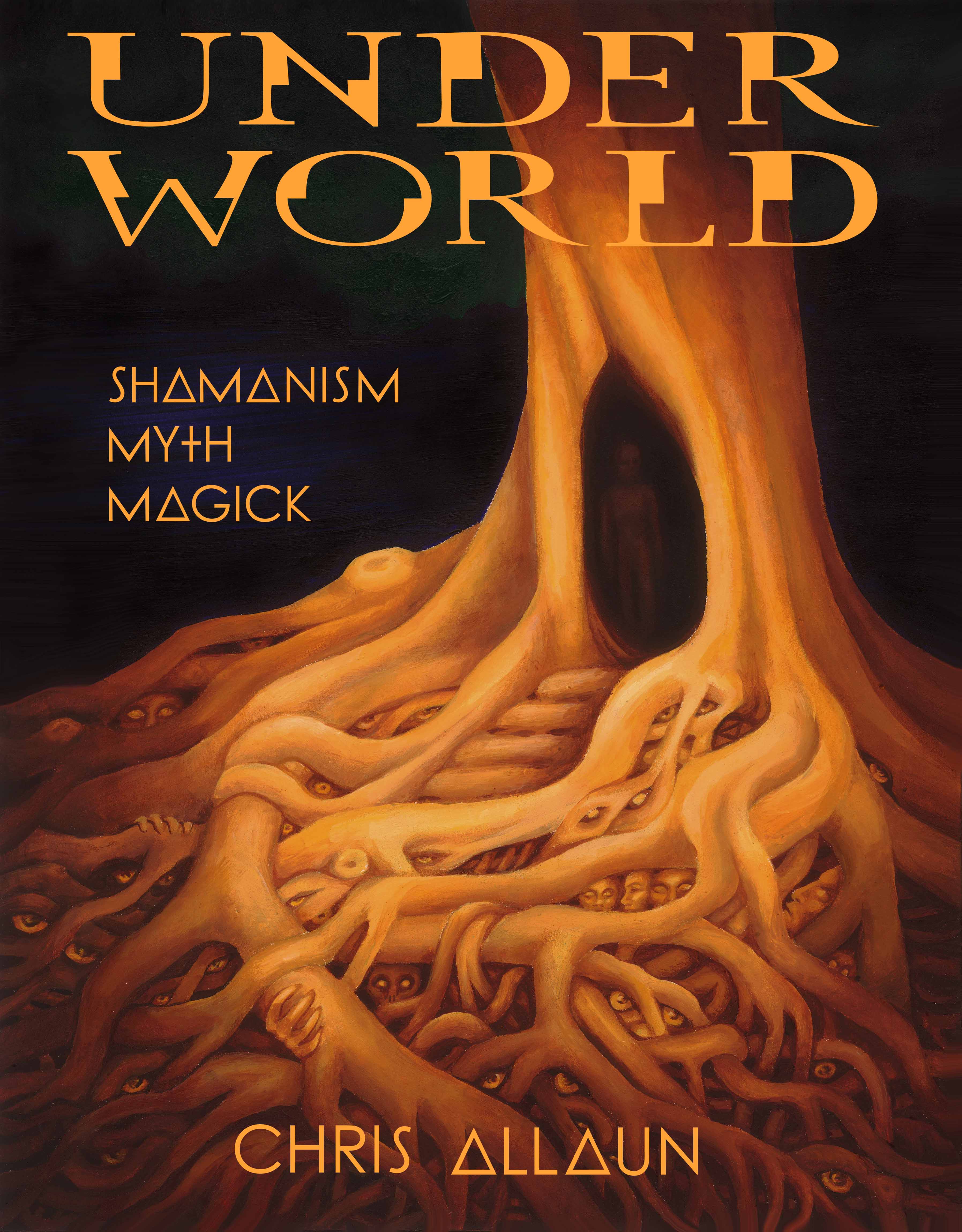
Underworld
Shamanism, Myth, Magick
Chris Allaun
Format: Softcover
ISBN: 978-1-906958-76-3
£15.00 / US $24.00
Click here for Kindle UK edition
Click here for Kindle USA edition
– Synopsis –
The Underworld has always been thought of as a place of darkness and despair. Even today there are many misconceptions about what the Underworld is and what awaits inside. We will learn how different cultures around the world viewed the Underworld and the afterlife. Some cultures have there own unique perspective, but surprisingly, cultures that had no communications with each other form across the world had similarities. Can this be a coincidence? Most importantly, we will learn how to journey there in the astral and map this incredible world. But be careful! Along with its many wonders and beauty, there are things that lurk in the dark that myths throughout the ages have warned us about. But for the Shaman or witch, are these warnings to keep us away or teach us how to commune with these ancient spirits and creatures?
As we journey deeper into the Underworld, we will discover places where the long-forgotten dead will rekindle our spirit and teach us the ways of magick. They have been waiting for us and have much to say. We only have to sit and listen to the wisdom of ancient times. We will also discover places of healing and rejuvenation. Places where ancient hags guard magick wells and the waters of life and death spring from a source so old, no one remembers where it came from. Along with these wonderful and beautiful places, there are places most dark and dreadful, the Hellworlds. These are the areas of the Underworld that test your spirit and what you thought was reality. You may never be the same, but you will be transformed, renewed, and more powerful.
The Underworld is strange and wondrous and cannot be contained. Sometimes, those spirits of the dead will not be bound in such a place and stay in the world of the living. The poor lost spirits stay with us for a variety of reasons. You will learn why the spirits of the dead are still here and how to help them journey to a place of rest. You never know, a spirit of the dead may be right behind you…
”Chris Allaun’s book, Underworld: Shamanism, Myth, and Magick is truly a masterpiece. Chris has thoughtfully taken a huge subject and separated it into readable and manageable sections and chapters. He clarifies –What is the Underworld? Who resides in the Underworld? Where is the Underworld? and Why does it exist?” — all questions that have fascinated mankind since the beginning of time. And Mr. Allaun gives the reader exercises to deal with the dark side of the underworld, practical ways to cope with exploring one’s own fears and terrors, along with ways to help others. He also includes an extensive bibliography, something very useful. From psychologists to ceremonial magicians to spirit workers, to people just trying to navigate today’s complex world, Underworld creates a clear path full of information and help, to guide us through these often troubling times. I highly recommend this book!”
– Janet Barres
Cover art/design Amanda Manesis
Chris Allaun: Author, Teacher, Medicine Man
Pan’s Daughter
Featured
The Magical World of Rosaleen Norton
Revised and Greatly Expanded Edition
Nevill Drury

Pan’s Daughter
The Magical World of Rosaleen Norton
(Revised & Greatly Expanded Edition)
Nevill Drury
Format: Softcover/326 pp/48 illustrations.
ISBN: 978-1-906958-41-1
£22.99/US$32/AUD$36(+$8p&p)
Click Here for Pan’s Daughter / USA
Click Here for Pan’s Daughter / UK
Click Here for Pan’s Daughter / AU
During the 1950s and early 1960s the Sydney-based trance-artist and Pan-worshipper, Rosaleen Norton, was well known in Australia as ‘the Witch of Kings Cross’ and was frequently portrayed in the tabloid press as an evil ‘devil-worshipping’ figure from the red-light district. Norton attracted attention from both the public at large and also the local police for engaging in bizarre pagan sex-rituals with her lover, the poet Gavin Greenlees. Details of these activities would surface from time to time in the local courts when Norton was defending her metaphysical beliefs and seeking to defuse claims that her magical paintings and drawings were obscene. Norton was also associated with the scandal that eventually engulfed the professional career of renowned musical conductor, Sir Eugene Goossens who had arrived in Australia in 1947 and became a member of Norton’s magical coven six years later.
Norton dedicated her magical practice to the Great God Pan and to a lesser extent Hecate, Lilith and Lucifer. She was also intrigued by the visionary potential of Kundalini yoga, out-of-the-body trance exploration and Aleister Crowley’s Thelemic sex magick and combined all of these elements in her ritual activities.
Pan’s Daughter is the only biography of Rosaleen Norton and provides the most detailed and authoritative account of her magical beliefs and practices. First published in Britain by Mandrake in 1993, it is now reissued in a revised and expanded edition.
“Brilliantly researched…outrageous and inspiring”
Fiona Horne, author of Witch – A Personal Journey and Witch – A Magickal Year
“A fascinating study. Drury’s understanding of the occult and spiritual realms makes Norton’s art and life comprehensible” Tom Thompson, Sydney Morning Herald
Dr Nevill Drury (1 October 1947 – 15 October 2013) is best known for his publications on modern Western magic, shamanism and visionary art. For many years he worked in the Australian book industry as an editor and art book publisher and in 2008 he received his Ph.D from the University of Newcastle for a dissertation on the art and magical belifes of Rosaleen Norton.
Surrealism & The Occult
Featured
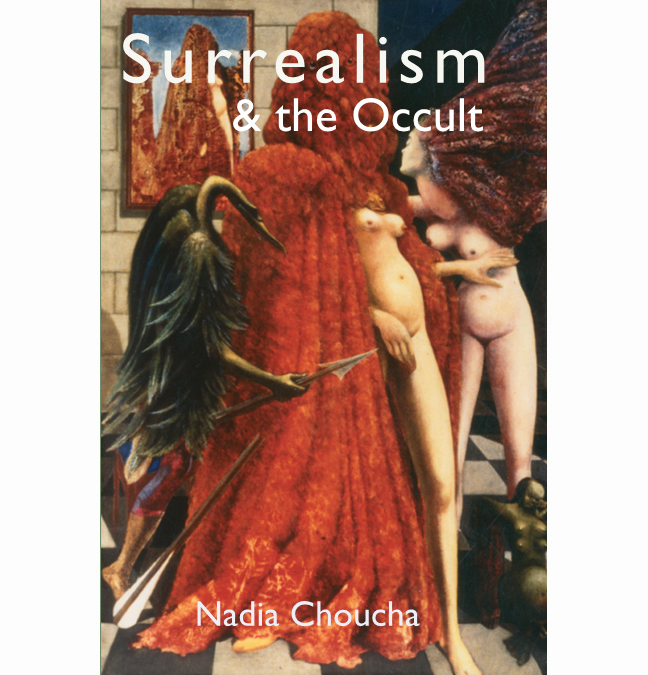
Surrealism & The Occult
Nadia Choucha
Format: Softcover/164 pp.
ISBN: 9781906958749
£15.00
Subjects: Art/Art History/Surrealism/Occult.
Click HERE for the UK edition
Many people associate Surrealism with politics, but it was also permeated by occult ideas, a fact often overlooked by art historians. This occult influence goes beyond general themes to the movement’s very heart.
This occult influence goes beyond general themes to the movement’s very heart. The antinomian stance of Surrealism can be traced directly to the influence of radical nineteenth century magi such as Eliphas Lévi, whose Dogma and Ritual of High Magic was widely read by Surrealism’s ideologues. Amongst these we find its progenitor André Breton.
The book shows how many Surrealists and their predecessors were steeped in magical ideas: Kandinsky, with his involvement with Theosophy, the sorcery of Salvador Dali; the alchemy of Pablo Picasso and the shamanism of Max Ernst and Leonora Carrington.
Surrealism did not establish itself in Britain until the 1930s but a select few felt something in the air. Almost ten years before the Surrealist experiments with automatic drawing, an obscure English artist, Austin Osman Spare had perfected the technique.
Nadia Choucha shows, convincingly, that occult and surrealist philosophies were often interchangeable. Surrealism and the Occult is seminal reading for art historians and occultists alike, while artists will find it a vital guide to the unlocking of the imagination.
Praise for Nadia Choucha’s Surrealism & the Occult
”Highly readable…seminal… fascinating” – Francis X. King
”alive, with the heady mixture of occult and pictorial symbolism treated with laudable lucidity.”- Art Book News
Ithell Colquhoun
Featured
pioneer surrealist artist, occultist, writer and poet
(reprinted)
Eric Ratcliffe
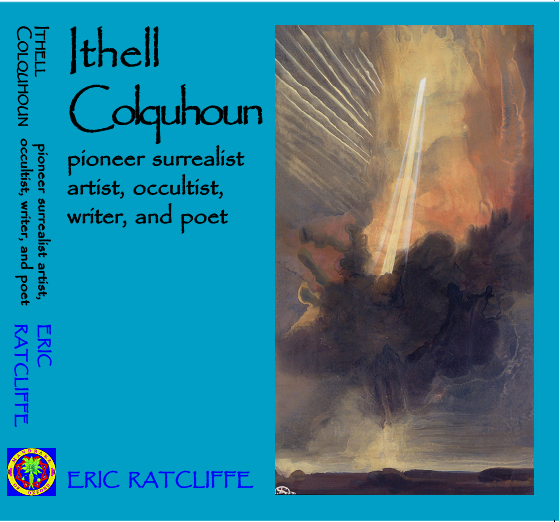
——————————————————————-
Ithell Colquhoun / UK / £30
——————————————————————-
Ithell Colquhoun / USA / US$40
——————————————————————-
Ithell Colquhoun
pioneer surrealist artist, occultist, writer & poet
Eric Ratcliffe
Format: Softcover/312pp/90 illustrations (25 colour).
ISBN: ISBN 978-1869928-98-8
£30/US$40
Subjects: Art/Art History/Surrealism/Occult/Magick/Biography.
–
The skills of Ithell Colquhoun in her main practice, that of artist and pioneer in this country of surrealistic art, have been long recognised. Additionally, other interests – alchemy, Earth-magic, active occultism, poetry, druidism, the pre-Christian pagan calendar, the history and membership of the Golden Dawn – and writing of and involvement in these interests by book publication and in a widely scattered field of correspondence, have created a miscellany of truly gargantuan proportion.
Eric Ratcliffe considered it was time to get together some of these pieces, to add something of what is known of Colquhoun’s early life and family history and to take the opportunity of listing a comprehensive calendar of her work and exhibitions. The result is neither strictly biographical nor a treatise on any one subject, but it is a first gathering of the roots, passions and multi-directions of this artist. It is a patchwork containing many launch-pads for exploration of the magical and mythical atmosphere which this artist existed in and created. Here therefore is a contribution towards solving a jigsaw and a wind-catch of the minor cyclones of lthell’s dedicatory interests, also serving as a record of her accomplishments in the art field.
REVIEWS
‘The subtitle of this book is: ‘Pioneer Surrealist, Artist, Occultist, Writer and Poet’, this multifaceted description captures the essence of who and what Ithell Colquhoun was about. Her connection to Cornwall is through the book The Living Stones, published in 1957, which was an early contribution to discovering the power of the Cornish landscape, prehistory and tradition and folklore. Even today, it continues to inspire people with its love for the ancient land of Cornwall…Ratcliffe’s biography made me want to go back and re-read The Living Stones, and no better thing could be said of a book such as this.’- Cheryl Straffon, Editor in Meyn Mamvro – Ancient stones and sacred sites in Cornwall – www.meynmamvro.co.uk
‘The author gives an excellent account of Colquhoun’s artistic career, explaining why she has been so overlooked (she stuck to her principles against the authoritarian demands of the British surrealist clique and consequently was expelled). Ratcliffe places proper emphasis upon the artist’s magical activities. She was a member of the OTO, Order of the Pyramid and Sphinx, Order of Holy Wisdom, Ancient Celtic Church and the Druid Order.
Despite having had the good fortune to read many of Colquhoun’s magical papers I learnt a great deal from this very well informed work. There is excellent bibliographical information including listings of unpublished typescripts and also as comprehensive as possible listing of her paintings and drawings.’
Ithell Colquhoun by Eric Ratcliffe, Mandrake of Oxford.
Reviewed by Ben Fernee @ Caduceus Books
‘Ithell Colquhoun was a pioneer surrealist artist, poet, writer, pantheist and occultist. Descended from Devonian ancestry, she was of Anglo-Indian birth and received her education in England at the Cheltenham Ladies College and later at the Slade School of Art in London.
After the war she moved to Cornwall where she spent the rest of her life. While at the Slade she became involved in Theosophical circles and then attempted, without success, to join Moina Mathers’ Alpha and Omega Lodge of the Hermetic Order of the Golden Dawn and Dion Fortune’s Fraternity of the Inner Light.
However during the 1950s she belonged to various occult groups including Kenneth Grant’s Typhonian OTO and Nu-Isis Temple, Dr WB Crow’s Order of the Holy Wisdom and Order of the Keltic Cross, Tamara Bourkhoun’s Order of the Pyramid and the Sphinx, as well as the Druid Order, the Cornish and Breton Gorsedd, the Ancient Celtic Church, Co-Freemasonry and the Fellowship of Isis.
This biography is profusely illustrated with many of Colquhoun’s paintings and also includes some of her writings and poetry. It is a fascinating study of a unique multi-talented woman who during her creative life contributed a great deal to both the artistic and occult fields. Recommended.’
Ithell Colquhoun, by Eric Ratcliffe.
Reviewed by Mike Howard in The Cauldron, issue 129, August 2008
Crowley
Featured
A Beginners Guide
John S. Moore & John Patrick Higgins
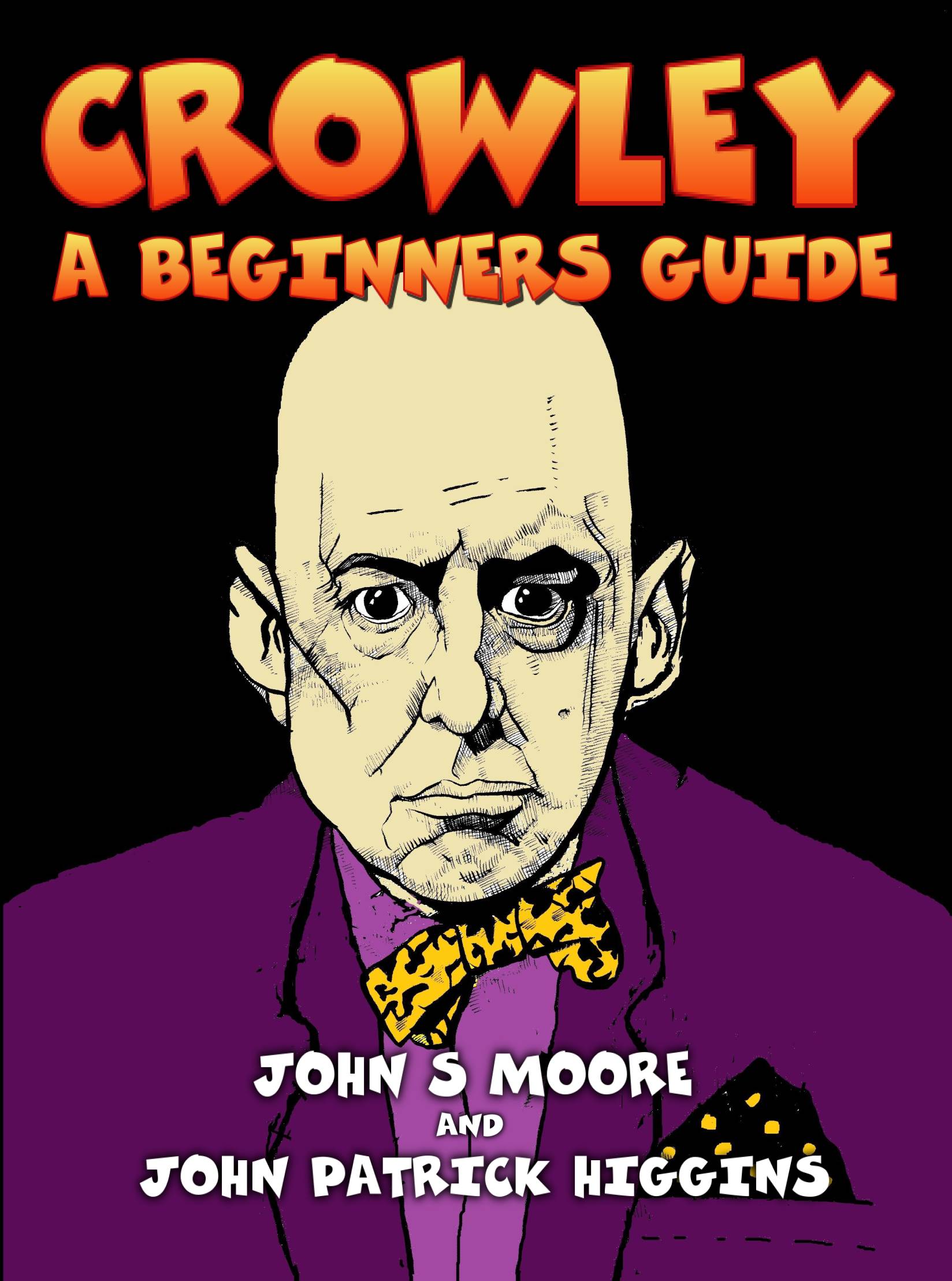
Crowley a beginners guide UK / £15.00
Crowley a beginners guide USA / US $22.00
Crowley, A Beginners Guide
John S. Moore & John Patrick Higgins
Format: Softcover/b/w Illustrated/154pp
ISBN: 978-1-906958-69-5
£15.00 /US $22.00
Subjects: Aleister Crowley/Thelema/Magick/Occult/Biography.
—–
“Do what thou wilt shall be the whole of the Law.”
Nearly seventy years after his death Aleister Crowley, the notorious Beast 666, is only just beginning to attract serious academic attention. Even so we would not expect to find him on any mainstream university courses; he is still too much associated with occultism. So, Crowley – A Beginners Guide is not your standard beginner’s guide.
“Let my servants be few & secret: they shall rule the many & the known.”
Readers may be surprised at the richness and complexity of his thought, as well as the extent of his influence. He needs background to be understood. Giving this opens fresh perspectives on much recent intellectual history.
Crowley – A Beginners Guide presents his main ideas in a straightforward and accessible format, with drawings and diagrams to place them in their historical context. It relates him to contemporary movements in art and scholarship. It describes his relationship to modernism and postmodernism, and his role in the counterculture of the sixties, as well as his continuing influence today. Interspersed are entertaining stories of his life and reputation.
Brilliantly illustrated by John Higgins, Crowley – A Beginners Guide, is a highly accessible guide to this fascinating, complex and controversial figure. It neither promotes nor condemns him, presenting hostile as well as favourable views of his character and achievement.
John S Moore is a freelance writer and independent scholar living in London. He is the author of Aleister Crowley: A Modern Master (Mandrake of Oxford, 2009) and Nietzsche – An Interpretation, (AuthorsOnline Ltd, 2011) and has written on Schopenhauer, Wittgenstein and Edward Bulwer-Lytton among others. More information at www.johnsmoore.co.uk
John Patrick Higgins is a writer and illustrator. He is the author of The Narwhal and Other Stories www.amazon.co.uk/Narwhal-other-stories-Patrick-Higgins ebook/dp/B007N6KJW8
He writes art criticism for various magazines and is Creative Director of Shot Glass Theatre Company www.culturenorthernireland.org/reviews/performing-arts/shot-glass. See also www.facebook.com
He lives in Belfast, which he continues to find extraordinary.
Read a review of Crowley A Beginners Guide from Magonia Review of Books pelicanist.blogspot.co.uk/2016/04/crowley-for-beginners.html
Seidways
Featured
Shaking, Swaying and Serpent Mysteries
(was Techniques of Obsession)
Jan Fries
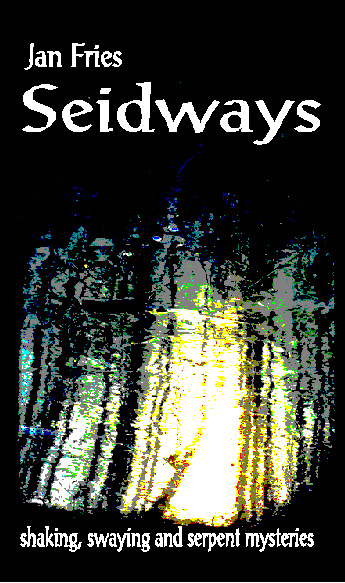
Shaking, Swaying & Serpent Mysteries
Jan Fries
Format: Softcover
ISBN: 1869928369
£14.99/US$24
Subjects: Northern Tradition/Odinism/Runes/Shamanism.
Buy Seidways UK
Buy Seidways USA & rest
Seidways
From the author of Helrunar – manual of rune magick and Visual Magick, a handbook of freestyle shamanism, come the definative study of magical trance and possession techniques. The author is inspired by the Nordic tradition of Seidr, said to have been taught to the human race by Odin. The book provides an extensive survey of the manifestation of this powerful technique through several related magical traditions – shamanisn, mesmerism, draconian cults and the nightside of European paganism.
Seething is probably the most useful magical technique I have ever learned. I first was taken by the pleasure of it. My body felt warm and sensual, and seething in the hips felt quite sexual. I liked the feeling of my body taking over where the shaking was first voluntary – but I could still have some control, making the shaking stronger or more subtle. After a while I started to see visions – something that very rarely happens to me. I could see (with my physical eyes, not astrally!) the surface of the land in the centre of the circle rippling, like waves of energy. It was a really moving experience in a site that – until then – had not been particularly ‘special’ to me… it ..has had a major impact upon my magical work which used to be largely indoors, as at last I have found a way that I can work outdoors. This gives my magical work a potency that it simply didn’t have before. – Shantidevi quoted in chapter twelve ‘Rhythms and the Mind’
Reviews:
-‘Very highly recommended’ – The Cauldron
‘Jan Fries shows himself to be one of the most innovative and creative of contemporary magical authors. This is the best book on practical magick that I have seen for some time… an extremely useful body of techniques which any practically-minded magician will be able to use. Beautifully illustrated…Mandrake should be applauded for producing yet another fine book of modern magical practice and thought. Buy it, you won’t be disappointed!’
– Phil Hine in Chaos International 22
‘The text is always interesting to read no matter where you start from. With such a broad spectrum of content, Seidways is suited to anyone studying shamanism for the first time, and wants to avoid a pile of new-age crap. It’s also a great all-rounder for anyone with a general interest in European mythology. Seidways will become one of the more thumbed books in my collection, and I am sure the collection of anyone else who buys it.’
– Sant reviewing in White Dragon
Elmer Crowley
Featured
A Katabasic Nekyia
Tom Bradley
(illustrated by David Aronson & Nick Patterson)
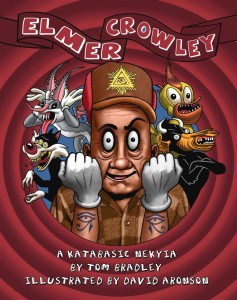
Elmer Crowley / USA & AUS / $22.00
Elmer Crowley
A Katabasic Nekyia
Tom Bradley, David Aronson, Nick Patterson.
Format: Softcover/132 pp – illustrated – many in colour.
ISBN: 978-1-906958-55-8
US $22.00 / UK £15.00
Subjects: Aleister Crowley & Thelema/picaresque graphic novel.
In Elmer Crowley, Tom Bradley dismantles and re-welds biography, novel, creative non-fiction and metaphysical treatise into a bizarre satire. Aleister Crowley, alias ‘The Anti-Christ’, has bungled his karma and ended up the Looney Tune character Elmer Fudd.
The whole outlandish premise plays out as a mockery of occultism’s darkest delusions. The subtitle means a descent into a ritual by which ghosts are invoked to divine the future.
The narrator is the incarnated ghost of Crowley. He and Hitler are sometimes compared for the similarities of their occult-based belief in “Do As Thou Wilt” as justification for turning hapless followers into “stringless marionettes.” Crowley’s opening words refer to Hitler as his “magickal child,” setting the moral tone for what follows. Numerous themes branch out from this initial assertion with key scenes wickedly illustrated, adding ‘graphic novel’ as yet another misleading describer of Bradley’s furcated katabasis.
Crowley, Fudd, Hitler, Buddha, Yeats, Heliopolitan hierophants, the Goddess Baubo, assorted “Nilotic dream despots”, a carrot-eating Madame Blavatsky, Bugs Bunny, Daffy Duck and their Warner Brothers producer, Leon Schlesinger bounce and boing their way across human history. These are the launch points for Bradley’s inquiries into questions of meta-ethics and truth against a background of “Esoteric Hitlerists.”
Crowley’s tragic flaw is his fixed idea that “magick is done to the strains of incantatory monotony, not self-conscious art.” This translates into control of non-questioning followers to serve his ends, noting with admiration that the A-bomb is “the most magickal blackjack to come swinging along since the sage Aurva armed his king with the fire missile in the Vishnu Purana.”
Crowley and Fudd share a speech defect: the inability to pronounce the R sound (“that wascal wabbit”). “Many fine magi,” Crowley claims, “perhaps even a slim majority… are poorly spoken.” That would include (besides Buddha and Hitler’s doctor) Leon Schlesinger, the money behind the Warner Brothers cartoons. Crowley and Schlesinger meet at a Hollywood orgy over a shared pederastic interest in a youth who also has a speech impediment. Whether Elmer Fudd’s “babbling weakness” on screen is a gibe at Crowley’s lisp is something the reader will have to determine. Either way, reincarnation as a lisping Looney is not an inapt destiny for the Anti-Christ who infamously wrote in his Confessions, “direct injury [is] the proper conjuration to call up gratitude.”
Doing as one wills, central to Crowley’s philosophy of Thelema, easily leads to a perverted will to power. Crowley realises after it’s too late that his magick act stinks. “Is ‘wayward sorcery’ a damnation offence as [Madame Blavatsky] proclaimed?” All you need is love, not will. As Bradley has stated elsewhere, “The universe runs on a Theosophical rather than a Thelemic dispensation.”
Elmer Crowley may confound those who want their words to move through books like soldiers in formation and come to a uniform halt at the end. But readers willing to navigate outside the usual throughways will find themselves in the higher vistas of this rich and complex tome, slim enough for the slow and multiple readings it deserves. – John-Ivan Palmer
REVIEWS:
Reading Elmer Crowley is like reading Crowley’s inner dialogue at 3am, after an intensive journey into his own inner abyss. It is, therefore, a magickal working that Crowley himself would be proud of.
– Gwendolyn von Taunton, author of Northern Traditions
Of Aleister Crowley’s many fictionalizations, this novel gets best into his head. Erudite, prideful, lascivious, funniest man of his time, and the mightiest spiritual spelunker–he speaks and shouts from these pages as clearly as he did in his Autohagiography, which is paradoxical, given the irreal setting.
– Barry Katz, HTMLGIANT
This book…captures the feel of Crowley with his bawdy, politically incorrect irreverence, his arrogance and his committed magickal spirituality and awareness.
– Charlotte Rogers, author of P is for Prostitute
The voice is dead perfect…I can’t imagine a hip Thelemite NOT having this book in her library.
– Don Webb, author of Through Dark Angles, former High Priest, Temple of Set
This self-described “picaresque graphic novel” reads like an account of Crowley’s death-bed fever dream or an afterlife bardo journey gone terribly wrong, wherein the fifty-eight Wrathful Deities take on the aspect of warped and sinister versions of Looney Toons archetypes…. the result reads like a trippy, post-mortem, long-lost epilogue to The Confessions.
– Richard Kaczynski, author of Perdurbo: The Life of Aleister Crowley
Making Talismans
Featured
Nick Farrell
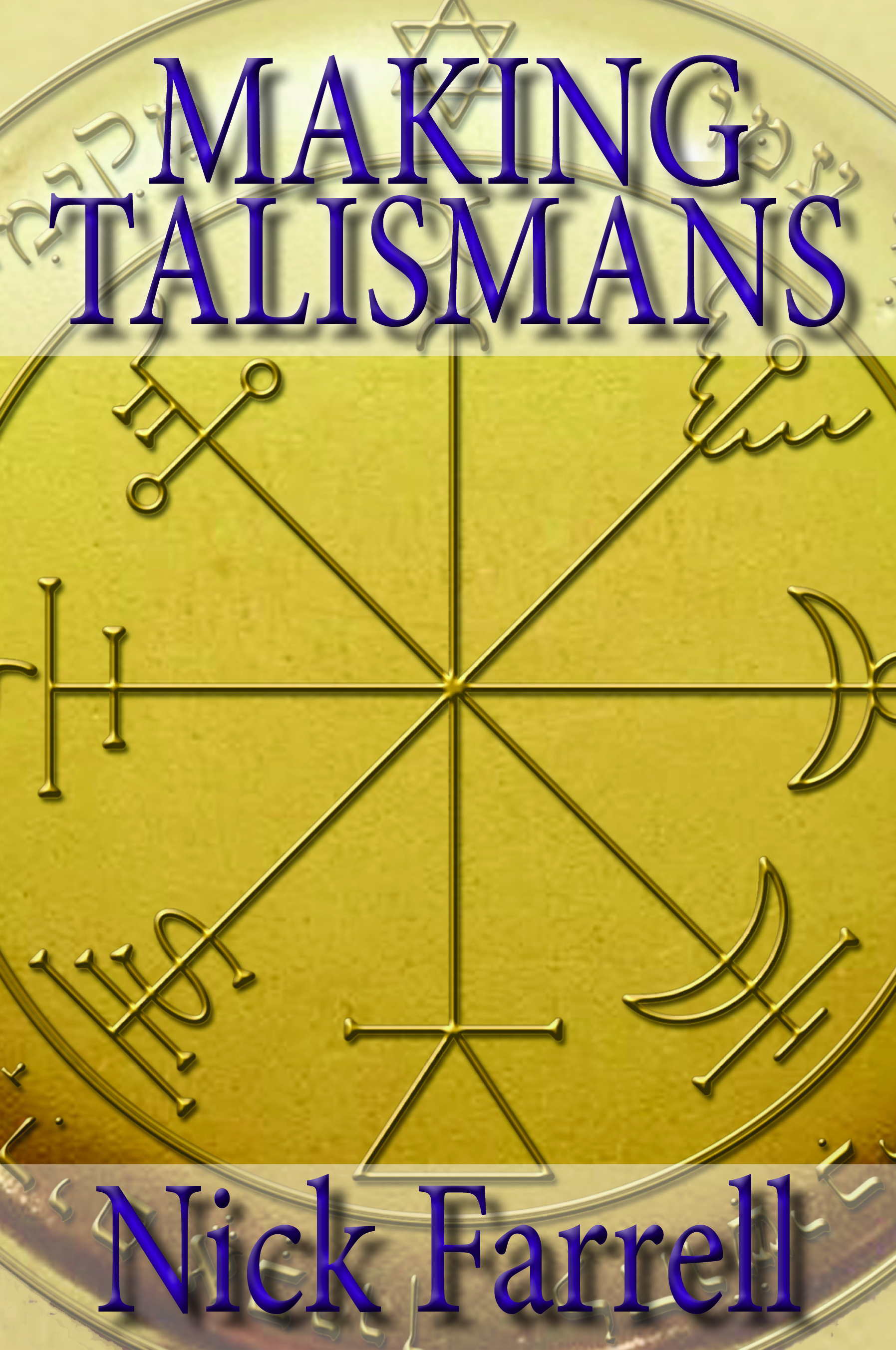
—
Making Talismans
Nick Farrell
Format: Softcover/284 pp/illustrated.
ISBN: 978-1-906958-57-2
£19.99 /US$25
Subjects: Magic/Occult.
—
Discover the secret keys and practical techniques to turn mundane objects into “living entities of power,” bringing real change in your life. By pooling magical practices from shamanism, paganism, the Order of the Golden Dawn, and Dion Fortune, Making Talismans offers training and techniques for performing advanced magical talismanic operations.
For many years this occult classic has been “out of print” and now has been reworked by the author to reveal more detailed and advanced magical work.
This book is nearly entirely practical and tells the reader how to create talismans which work and how this specialist form of magical work can be part of a spiritual path.
Nick Farrell is the author is the Chief Adept of the Magical Order of the Aurora Aurea which is a modern Golden Dawn dedicated to magical experimentation and development.
http://nick-farrell.blogspot.com/
Nick Farrell’s Blog – A blog providing training for all interested in the Golden Dawn, the magical writings of Nick Farrell and his Magical Order of the Aurora Aurea
Click here for UK edition including postage
The Peacock’s Egg
Featured
Ron Wyman

The Peacock’s Egg
Ron Wyman
Format: Softcover
ISBN: 978-1-906958-34-3
£15.00+p&p / US $23.00+p&p
Subjects: Alchemy/Magic/Occult.
Click HERE for USA
Click HERE for UK
Special offer
Get The Peacock’s Egg & The Black Toad for only $30.00 / £20.00
The Peacock’s Egg & The Black Toad Click Here for the UK offer
The Peacock’s Egg & The Black Toad Click Here for the USA & Rest offer
The Peacock’s Egg describes a transformation of the psyche. This is based in the alchemy in which an alchemical dream process is set into motion, acquiring highly resolute manifestation through phases of the opus. An intensive and lengthy occult praxis is entered in which dreams and dreaming practices are developed. Advanced levels of occult experience are attained in which ethereal energy becomes mastered, involving a purification. These attainments adhere to beliefs regarding this type of paranormal experience that include the author’s interest in the work of Carlos Castaneda. The intricacies of a crucial alchemical image are described—a Vision of the Peacock’s Egg, an accessible metaphysical anatomy. The spatiality of the rose garden, the alchemical death, and attainment of the lapis are then brought into the practice.
Magick Books
Jennifer Layman
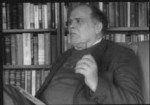
Protection for your Occult Books
Mandrake of Oxford boasts an impressive range of books about the occult, from texts about divination to works about magick. It is ideal for those who wish to pick up a title that would be difficult to find elsewhere. The occult is a topic that has fascinated mankind for centuries. Witchcraft, spells and the supernatural have been a source of interest since the dawn of humanity. As well as being interesting, these books can sometimes go up in value to the point where they sell for substantial sums of money, with books exchanging hands at auctions for up to twenty thousand pounds. Their value is not just financial though; many believe that books about the occult are powerful items that should be handled with care. A vast number of different traditions in which magic and witchcraft are important preach that the written word possesses a great amount of power and some hold the view that once owned by somebody, a spiritually charged book develops a connection to its owner. With that in mind, it is important to ensure that these books don’t fall into the wrong hands or get damaged or destroyed, as if you believe in their power then you won’t want to lose an item that you are connected to in this manner and if you merely see them as being fascinating to read then you won’t want to part with an essential item in your collection.
Remain Moisture, Dust and Insect Free
If you value your books then you can protect these prized possessions by keeping them in a dry environment away from dust and insects and purchasing contents insurance in case they are stolen or damaged through no fault or your own. People who collect occult books in the hope that they will one day go up in value should be aware of the fact that the condition of a book can make the difference between it being worth a small fortune and being worth next to nothing. However books do not need to be hundreds of years old in order to be worth considerably more than they were when they were written; some titles that were written within the last thirty years have more than tripled in value simply due to the fact that small numbers of them were produced and they are highly sought after.
Spiritual Cleansing
Those of you that believe that books contain spiritual as well as physical value will wish to care for the powers that are contained within them. If you have bought a book of spells then there are purification routines that should be adhered to when using items in rituals and books are no exception. These routines will vary dependent upon the tradition behind the spells, for example practitioners of Wicca believe in using certain herbs for cleansing purposes, whereas those who participate in ancient Egyptian practices have a series of complex rituals connected to cleansing. Many believe that failing to perform the correct cleansing routines can potentially lead to an item being contaminated with negative spiritual energy.
Binding Spell
If the book that you wish to protect is not a book of spells then you might wish to cast a binding spell on it in order to ensure that the power that is possessed within its pages is solely yours to harness. Place a candle, an incense stick, a rock and a cup containing water in a circle formation and sit behind it with the book in your hands. Free your mind of thought and try your hardest to spiritually connect with the book. Next extend the circle of objects so that you can fit within it and sit in it holding the book. Speak out loud the sentence, ‘You are bound to me. We now work as one’. Once you have completed these steps, the spell will be complete.
Pride of Place on your Bookshelf
Words are regarded as having special spiritual significance in a plethora of different traditions ranging from mainstream religions to ancient witchcraft. Perhaps this is for good reason. Whether you believe in the occult or just find it an interesting topic to research, taking the correct care of your books can ensure that they will be there for you to enjoy for years to come. It will mean that they can remain in a readable state and continue to take pride of place on your bookshelf.
Nightshades
Featured
A Tourist Guide to the Nightside
Jan Fries

Nightshades
A Tourist Guide to the Nightside
Jan Fries
Format: Hardback – Cased Matt Laminate A4 216 pp.
ISBN: 978-1-906958-45-9
£24/US$40
Subjects: Aleister Crowley & Thelema/Kenneth Grant/Typhonian Magick/Occult Art.
“Nightshades is the record of one remarkable magician’s exploration of the inverse regions of the Tree of Life. Aleister Crowley’s Liber 231 provides the map and Kenneth Grant’s Nightside of Eden a travelogue. “Liber 231, apparently started life as a text within the Hermetic Order of the Golden Dawn, as an exercise to develop astral and trance abilities or perhaps in other more elaborate rites. The nightside aspect requires some care and alertness in case of accident. The correct attitude is said to be one of self or ego-less witness. Or maybe it’s just one needs the use of an all-embracing rather than a limited kind of identity and self-identification” (mmm)
“The Nightside is always with us. It’s so much older than the Dayside. Before the light began to shine, the night was there. Some assume that we are dealing with a simple polarity. On one hand the radiant world of colours and forms, more or less thinkable, reasonable and meaningful. Like the pretty picture of the Tree of Life it has its scenic cites, its hotels, restaurants, shopping opportunities and highways in between.
On the other hand the chaotic world of uncertain and incomprehensible mysteries. Both of them connected by the voidness that makes them possible. It looks symmetrical. But when you reach the Nightside it doesn’t work like that. The Nightside is not simply a reflection of the dayside with a few confusing and spooky bits thrown in.
The Dayside is a tiny island of experience in a huge ocean, the Nightside, full of currents, island chains and continents of the possible and impossible. All and Nothing are present everywhere. Our island is not the opposite of the world-ocean, it is simply a tiny and comprehensible part of it.” (jf)
Jan Fries Nightshades comprises 72 intense drawings prefaced by an explanatory essay detailing the background and genesis of this ultimate magical adventure.
A Contemporary Western Book Of The Dead
Featured
An Anthology
Edited by Charlotte Rodgers & Lydia Maskell
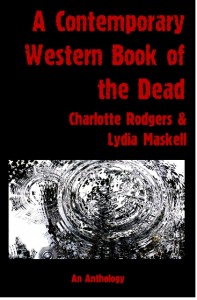
A Contemporary Western Book of The Dead
An Anthology
Edited by Charlotte Rodgers & Lydia Maskell
Format: Softcover
ISBN: 978-1-906958-04-6
£15.00 +P&P / US$22+P&P
Click HERE for UK edition
Click HERE for USA & Elsewhere
Click here for Kindle UK Edition
Click here for Kindle USA edition
‘I was musing on Singapore in all its affluent glory still having shrines for the dead on every street corner during ‘The Festival of the Hungry Ghosts’. Then I was musing on how the socially mobile of modern western society eschew death rites and grieving in the name of ‘holding it together’ and being progressive. I thought of which civilizations are falling and which are rising again, and wondered whether acknowledging death and the ancestors is a vital part of a maintaining personal identity and our place in society. I remember how my grieving father mourned for all the information he had relied on his deceased wife remembering; information which was now lost. I recalled Michael Crichton’s words ‘If you don’t know (your family’s) history, then you don’t know anything. You are a leaf that doesn’t know it is part of a tree.’
Then I thought maybe someone should write about the cults of the ancestors and death, perhaps an anthology, perhaps cross relate experiences of loss to personal spirituality and magick and history. I know that years of working with the dead in the name of art and spirituality, didn’t prepare me for the death of my mother. What helped me was the advice of someone from a long tradition of working with the ancestors. I think that collecting the experiences of spiritual practitioners in their working with grief and death is part of a living and necessary tradition that will give respect to the dead and strength, identity and support to our own personal spirituality.’
Within this book are rituals, stories, traditions and experiences of magicians’ scholars and artists who work with death. Some of the contributors such as Nema, Mogg Morgan, Louis Martine and Nevill Drury (to name but a few) have helped define contemporary transformative spirituality. Others are less well known but just as learned. As there should be in such a collection there is comedy, anger confrontation and practicality. This anthology is about who we are, and where we come from. It is also about how we change. A Contemporary Western Book of the Dead contains voices and visions that acknowledge our past, feed our present and guide the direction of our future.
Introduction/Charlotte Rodgers
Loved One/Nema
All a Do about Death /Josephine McCarthy
Clans For The Memory / Sarah Grimstone
Learning About Death / Nevill Drury
A Thoughtful Wake / Louis Martinie
Break On Through To The Other Side /Louise Hodgson
Death the Final Frontier / Sue Fox
The Bardo Thodol – Bon Voyage / John Power
You Only Live Twice / Ode bi Tola
On Speaking with the Dead: The Cult of the Dead in Traditional Culture / Michael Clarke
Body / Mishlen Linden
The Great Western Hoax / Ode bi Tola
The Book of Gates: A prose arrangement / Mogg Morgan
Biographies of Contributors
Photographers:
Sue Fox, Ruth Kenyon, Ariadne Spyridonos Xenou (Cover: Gerald Hutton)
Visual Magick
A Manual of Freestyle Shamanism
Jan Fries
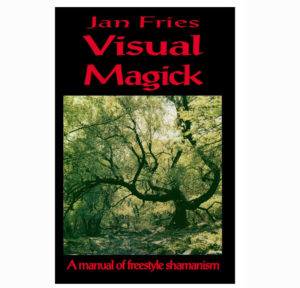
Visual Magick
A Manual of Freestyle Shamanism
Jan Fries
Format: Softcover
ISBN: 1869928571
£15.00 / US$24.00
Subjects: Sigil Magick/Runes/Shamanism/Chaos Magick
Buy UK Edition
Buy USA Edition
Suitable for all those inspired by such figures as Austin Spare and Aleister Crowley, and who feel the imperative to develop one’s own unique magick way. Visual Magick aims to build vision, imagination, and creative magick. It shows how magicians, witches, artists and therapists can improve visionary abilities, enhance imagination, activate the inner senses, and discover new modes of Trance awareness. The emphasis is on direct experience and the reader is asked to think, act, do, and enjoy as s/he wills.
More information
Visual Magick began as a small treatise on sigil Magick and automatic drawing circulated privately amongst members of the Maat network and is written for practising mind explorers of the unorthodox variety.
Review for Pentacle Magazine www.pentaclemagazine.org by Kate Hoolu
‘No matter what the medium, a talented priest can communicate … without preaching or didacticism. Art shows rather than tells. All great artists function as priests, whether they think of themselves as priests or not.’
If you are an eclectic magickian or shaman or have any interest in Austin Osman Spare, this is a book for you. Spare said, “All desire, whether for pleasure, knowledge, or power, that cannot find ‘natural’ expression, can by sigils and their formula find fulfilment from the subconscious”. This book is at least in part a modern view of the sigil magick that derives from AOS. But it is much, much more.
Fries has written on several subjects, including the Tao and Rune magick, but this work shows very good awareness and ability with Spare’s techniques, cross-fertilised with some of the more well-known methods of shamanism and his own innovations; hence the subheading.
Fries makes the important point that sigils can not only be designed by the operator (for whatever magickal purpose) but also RECEIVED from entities too… and in those cases, there is often a useful secret to be discovered within the sigil: “it should be noted that, while the sentience behind these sigils appears independent, their aesthetics are usually suited to the personality of the receiver. The best kind contains a blend of known and unknown…half-revealed and half-concealed”. This also stands as a beautifully short summary of perhaps what Aleister Crowley and the Book of the Law are about- obviously it is in AC’s writing style, but has so much more within… And Kenneth Grant’s work on the Tunnels of Set is supposedly largely based on received sigils.
Regardless of the occult debate about whether these received messages derive from a neurological or a non-human source, which is not within the scope of this review, it makes perfect sense for them to appear in this ‘mixed’ manner. If they were completely incomprehensible they would be ignored, and if they were completely ordinary and fully known already, then they would be un-remarkable and pass from consciousness as quickly as yesterday’s newspaper headlines. The half-unknown element makes them all the more tempting and interesting to the magickian, like a partly open door…
Avalanches of really good points are made by JF, which are eminently sensible, humorous and useful. Not for him is gibberish pontificating about very fine points of obscure theory; his stance is very much of the Chaos magician- ‘get off your ass, find what works, use it and keep trying new things and get out of your conditioned tunnel realities, rather than relying on dogmatic magickal techniques that often descend from book to book, unchanged and without ever being challenged. He makes the very important point that you must allow yourself to make mistakes, and perceive them like that, and not as something else that is kinder to one’s often bloated magickal self-view:
‘Failure’ is recognized as a threat to ego… the same ego that so happily pretends to have divine power and authority… and so the whole thing is usually considered a ‘challenge’ or ‘ordeal’ in such cases- anything rather than accept that one might be wrong” – Indeed: in magick, strange things happen, to the point where, as Ramsey Dukes has said (somewhere): “cock-up is the word of the Aeon”
As the title suggests, there is a distinct artistic bent to this work, but you don’t ever need to have sketched anything before to be able to join in with this stuff – it’s not the quality of what you produce, it’s the intent of the experiment: Fries encourages everyone to experiment with drawing sigils, automatic writing etc, but in all of this to take credit or debit for the works created (and the results of using the sigil magick method): “Frequently people need to insist on the ‘automatic’ origins of their creations (and behaviour) when they dare not assume responsibility for them. It’s so much safer to claim ‘I can’t draw but sometimes the spirit of Leonardo comes over me …’ as if that spirit has nothing better to do!… It’s always easier to blame some spiritual agency than to assume the responsibility of recognizing and developing one’s own talents”
Having dealt at length with visual methods, Fries then describes ”Chaos language”, a kind of glossolalia, which can be seen as a way of making auditory sigils with the voice. The book is worth the cover price just for this part. Awesome! Jan Fries:- add him to the growing list of ”people we like”. Superb, inspiring book.’ – KH
‘One of the best books on magick I have read in a long while.’Pagan News
‘A practical modern grimoire.’- The Cauldron
Living Midnight
Three Movements of The Tao
Jan Fries

Living Midnight
Three Movements of The Tao
Jan Fries
Format: Softcover
ISBN: 978-1-869928-50-6
£15.00 /US$24.00
Subjects: Magick/I Ching/Taoism.
Click here for Kindle UK edition
Click here for Kindle USA edition
In this book, you will find a study of the divination system known widely as the I Ching, but here presented with all its magick intact and in a totally unique way. This leads naturally to an examination of the techniques of Taoist meditation and finally to a look at the divine entities that lie behind the system – the Immortals.
Anyone who has read Jan Fries’s inspiring books – Helrunar, Visual Magick and especially Seidways: Shaking, Swaying And Serpent Mysteries, cannot have failed to notice some of the magical techniques of the east and of the Taoist tradition are very close to his heart. Here you will find many practical exercises, I Ching divination in the mind, breathing experiences and visualisation of coloured vapours.
‘You can find the Immortals exploring the hidden delights of enchanted fairy grottoes, flower gardens, pine forests and pleasant autumn lakes. They walk on clouds, they sit in shady valleys enjoying the swirling mists and rest in the heart of the living midnight. You can meet them in the centre of yourself once you become empty enough. And you can meet them out here, walking in the world, disguised as mortals.’
‘May the high-born reader cast a benign and forgiving eye on this work, experiment with its humble methods and come to a higher understanding of the mysterious workings of the Tao.’ – Jan Fries
MAGICK WORKS
Julian Vayne
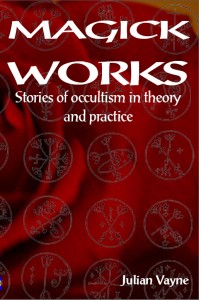
Magick Works
Julian Vayne
Format: Softcover
ISBN: 978-1869928-469
£15.00 / US$24.00
Subjects: Magick/Chaos Magick.
Magick Works / USA & AUS / $24.00
REVIEW
”Many years ago your editor had a short conversation with the author of this book at the Aquarian Festival in London when he was still a teenager. He was asking how he could join a coven or a magical lodge and my advice was that he had to wait a few years. At the time some people dismissed him as a precocious brat, but the passing of time has proved that judgement wrong.
His latest book is a selection of ‘personal experiences, insights and challenges woven throughout with the golden thread of magick’ and they are mostly based on the talks he has given over the years since he was a wunderkind. They range from Crowley as a shaman to English witchcraft and macumba, green politics and druidry, to drugs and magick. Highly entertaining stuff.”
Magick Works by Julian Vayne,
Reviewed by Mike Howard in The Cauldron,
issue 131, February 2009.
GREAT PURPLE HOO-HA
part I&II
Philip H. Farber
(Magical Fiction)
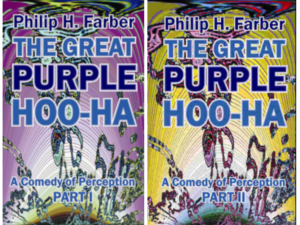
The Great Purple Hoo-Ha part I
Philip H. Farber
Format: Softcover
ISBN: 978-1-906958-16-9
£9.99/US$14.99
Subjects: Fiction/Magick/NLP.
‘Farber’s writing is a joyride through the psyche. Absurdity and the internal workings of our own beliefs are less than a hair’s width apart – and Farber illustrates this with inimitable style, humor, and a kitschy sense of self- referential pseudo-realism.’
– LaSara Firefox Allen, MPNLP,
Developer of Gratitude Games and author of Sexy Witch
Special Offer:
GPHH Part 1&2 for Only £12.99+p&p
GPHH Part 1&2 for Only $22.00+p&p
‘As blatant propaganda, The Great Purple Hoo-Ha is funnier than Catholicism and slightly less disgusting than ads for colonic irrigation.’
— Ivan Stang,
Church of the Subgenius
‘A surreal, submodalicious page turner that will have you leaping from the written words to your own life in a joyous celebration and an aching wish for your own Hoo-Ha.’
— Donald Michael Kraig,
author of Modern Magick and The Resurrection Murders.
”From a magicko-religious point of view I’d say, ‘The Great Purple Hoo-Ha proves that changing Perception is the Great Work’. From a reader’s perspective I’d say, ‘It’s like Stranger in a Strange Land except much funnier and with hotter sex.’ From a friend’s perspective I’d say, ‘Dude, you should buy this!'”
— Don Webb, author of Aleister Crowley: The Fire and the Force and Uncle Setnakt’s Essential Guide to the Left Hand Path.
‘Joe had a drinking problem. The possible demise of his television talk show and the end of his career had tilted a very big bottle of Old Mystery into his guts.
Now he was having trouble telling where the hallucinations ended and reality began. Had the mysterious young man with the cat – whom nobody else could see – really granted him a magical wish for fame and fortune?
Were the sex-obsessed cultists he was investigating on the show really bringing on the End of the World? Where did the sentient cream-filled pastries come from? Who was the Most Disgusting Rock Star Ever?
And, more importantly, would Joe ever get his new girlfriend, the Goddess, into bed?’
Aleister Crowley,
Thelemic Magick
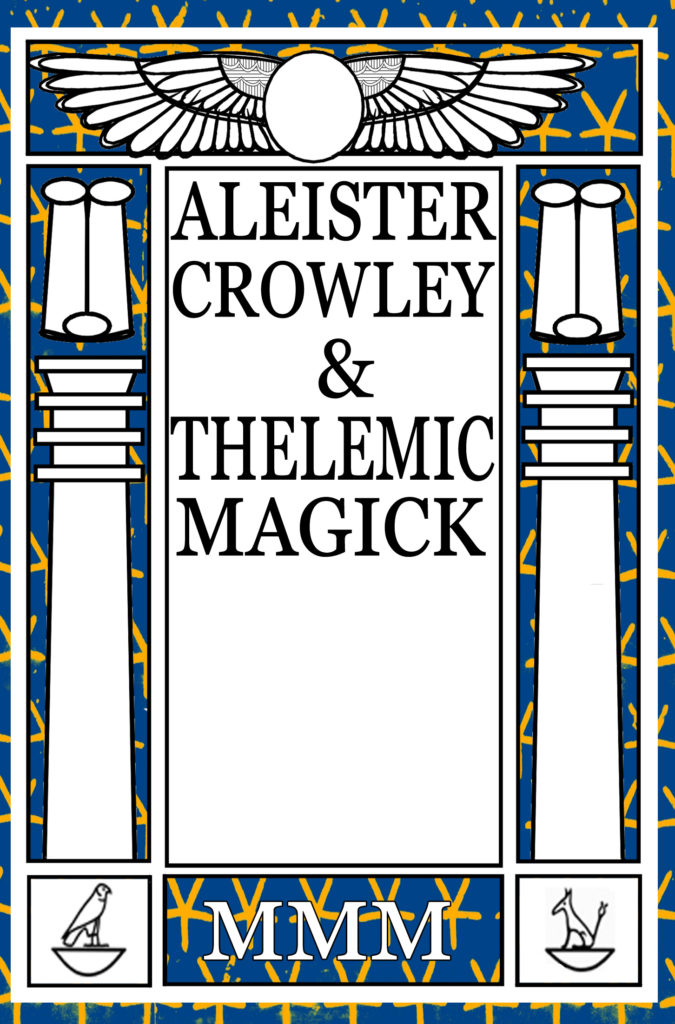
Revised Edition
12 October 2022
(was Proceedings of the Oxford Golden Dawn Occult Society Thelemic Symposium)
Mogg Morgan
Format: Softcover
ISBN: 186992844X
£15.00/US$22.00
Subjects: Aleister Crowley & Thelema/Magick/Enochian Magick.
Hell of a Guru
Do what thou wilt shall be the whole of the law
Aleister Crowley may have died in 1947, but his influence is still very much felt by the magician of the new aeon. The CD soundtrack The Beast Speaks sold 8000 copies since its release in 1993, and the paperback edition of Crowley’s Confessions was number two in Virgin Megastores top ten books. The modern magician is no slavish follower or member of some mind bending cult. Crowley’s watch word was Thelema (The Crowleian pronunciation is Theh-LEE-mah, the accent being on the vowel of the second syllable, Greek speakers say the accent should be on the vowel of the first syllable for it to be pronounced right….ThEH-lee-mah) – which means [free] Will. Those who choose to follow this magical path aim to de-condition themselves, to develop independence of spirit and ultimately to become their very own self. One of the many attractions of Crowley’s type of magick, was this advice to follow one’s own way and create your own life path. You don’t need a priest or a judge to tell you how to act – work it out for yourself.
As part of the process of developing self-knowledge, Crowley advocated the practice of magick. This he defined as ‘the science and art of causing change in conformity with will.’
Thelemic magick can be either a system or an approach to the magick of any tradition, e.g. Hermetic, Ceremonial, even Witchcraft. In Thelema, as in all other styles of magick, there are at least two different types of magical entity – the ‘Masonic’ and the ‘Rosicrucian’. The Masonic tends to be organized into definite hierarchical orders; whereas the Rosicrucian is more freeform, often a mere network of peers. The authors of what follows reflect many of these different styles of Thelemic magick and reading what they say is perhaps the best way to grasp what Thelemic magick is all about.
As part of the process of developing self knowledge, Crowley advocated the practice of Magick. This he defined as ‘the science and art of causing change in conformity with will.’ The history of magick is the history of human beings. Many of the things that are now labelled ‘culture’ began as experiments in ritual and magick viz. drama, music, art, dance, philosophy and poetry etc., etc. Magick has played a role in many key moments of our history, for example during the fourteenth century, it was the philosophy of the Renaissance. In our own time, many modern art movements have been driven by magical ideas, for instance, the first abstract painting was made by the Theosophist Kandinsky. Magick is a valuable and reputable activity to undertake.
Tantra for Westerners
A Practical Guide to The Way of Action
Francis X. King
 Tantra for Westerners
Tantra for Westerners
A Practical Guide to The Way of Action
Francis X. King
Format: Softcover
ISBN: 978-1-869928-60-5
£15.00 / US$24.00
Subjects: Tantra/Tantrism.
Click HERE for USA & AUS
Click HERE for UK
Tantra has been defined as “a mystical philosophy” and as “an unorthodox religious tendency”. Both definitions are incomplete.
While Tantra has mystical, philosophical and religious aspects it is, above all, a technique of action – a system of physical, mental and spiritual discipline incorporating meditation, yoga, and sacramental worship in the widest sense of the phrase. This system has one purpose: the transformation of the individual – his or her rebirth to a new existence.
There is no “tantric faith” to be accepted or rejected on the bases of thought and emotion. tantrics make the same claim as Western magicians: “if you follow a certain course of action you will be led back to the roots of your own identity and will learn the truth about yourself and the universe you inhabit.”
Tantra For Westerners is a complete theoretical and practical guide to the Way of Action, covering the concepts of pleasure and pain, power and passivity, esoteric physiology, Tantra and Qabalism, right-hand and left-hand Tantra, tantric ritual for westerners and the arousal of Kundalini – the serpent power.
Francis X King (1934-1994) was a well known authority on magick, mysticism and religion. His books includes Ritual Magic in England and The Magical World of Aleister Crowley.
Judith Page’s cover painting, title ‘Tristan’ 20″ x 24″ oil on canvas. It shows the Goddess Tsun’kie k’sai, a Burmese deity. The cat is a Burmese, sacred cat of Burma.
judith-page.com
The Flying Sorcerer
Being the magical and aeronautical adventures of Francis Barrett, author of The Magus
Francis X. King
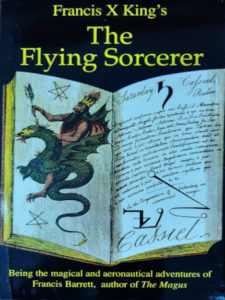
The Flying Sorcerer, Francis Barrett
Francis X. King
Format: Softcover
ISBN: 9781869928209
£15.00 / US$22.00
Subjects: Hermeticism/Biography/Magick/Occult.
Click HERE for the UK edition
Click HERE for USA & Elsewhere
–
The Flying Sorcerer is the only biography of an enigmatic 18th-century magus Francis Barrett, whose book The Magus or Celestial Intelligencer, laid the foundation of the current magical revival. He was the first author since the middle ages to compile a manual or ‘grimoire’ of magick. The Magus or Celestial Intelligencer is widely read and still capable of providing insight.
Francis King offers a fascinating picture of Francis Barrett, a man who lived on the frontier of technology, both in terms of the inner landscape and his pioneering experiments in balloon flight. It discusses his teachers, peers, and the subsequent progress of his disciples.
Journal for the Academic Study of Magic 1-4
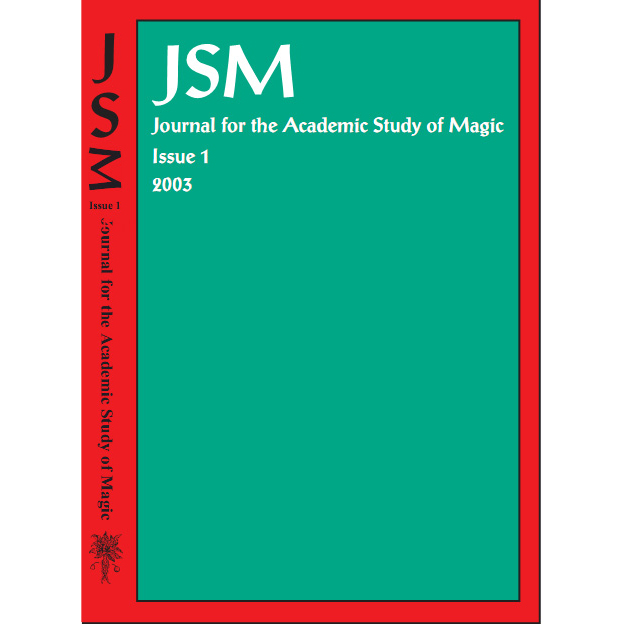
A wide and deep view of magic – rating 9.’ Fortean Times 176
‘A must-read for all those interested in an academic approach to the magical arts.’ The Cauldron
JSM1
ISBN 978-1869928-674
Format: Softcover/200 pages.
ISSN 1479-0750
£20/US$40
Click HERE for JSM1 / UK
Click HERE for JSM1 / USA
The first volume of JSM offers a rich dive into the study of magic and esotericism. Alison Butler’s analysis of Barrett’s Magus highlights its significance in Western occultism, while John C. Day’s exploration of the Cult of Dagon sheds light on this ancient deity. Joyce Goggin traces the history of tarot and playing cards, and Dave Green examines magical identity in times of social uncertainty. Matt Lee’s discussion on anomalous sorceries, Ilaria Serra’s look at Streghe in queer writings, and Deana Weibel’s insights on magical thinking in pilgrimage round out this diverse and engaging collection.
JSM2
ISBN 978-1869928-725
Format:Softcover/410 pp.
ISSN 1479-0750
UK £20/US$40
Click HERE for JSM2 / UK
Click HERE for JSM2 / USA
JSM 2 offers a diverse and thought-provoking collection of essays that explore various aspects of magic and the supernatural across different cultures and historical periods. Woodman’s piece on *Lovecraftian Magick* delves into the intersection of modernity and the demonic, while Green’s psychoanalytic approach to Pagan magic offers fresh insights into the psychology behind magical practices. Chambers’ examination of supernatural reliance during World War I adds a historical dimension, revealing how soldiers turned to the mystical in times of extreme crisis.
Morgan Luck’s exploration of the metaphysical ties between magic and miracles challenges the boundaries of these concepts, while Semmens’ study of demonic possession and spiritual healing in 19th-century Devon provides a captivating look at rural beliefs. Filipovic and Rader’s analysis of the human body in Southern Slavic sorcery highlights the cultural significance of folk practices, and Snell’s mysterious “Four Glasses Of Water” adds an intriguing layer of symbolic interpretation.
Hale’s exploration of the Cornish landscape, Evans’ study on Kenneth Grant’s influence on the magickal revival, and Cheak’s linguistic analysis of magical terminology across cultures further enrich the volume, offering readers a well-rounded exploration of the magical and mystical. McCannon’s examination of the symbolism of the pierced heart in Roerich’s work ties the collection together with a focus on the profound power of symbols.
Overall, JSM 2 is a captivating read that will appeal to scholars and enthusiasts alike, providing a deep dive into the world of magic and its enduring influence.
Review: The Pentacle 13
‘Don’t be put off by the academic titles these articles are well worth reading whatever your path and I can’t wait for Issue 3. – rated 5 Pentacles’
JSM3
ISBN 978-1869928-964
Format: Softcover/300 pp.
£20/US$40
Click HERE for JSM3 / UK
Click HERE for JSM3 / USA
JSM 3 presents an engaging collection of essays that explore the intersections of magic, identity, and culture. Amy Lee’s piece on witchcraft as a new language of female identity offers a fresh perspective on the empowerment found in modern witchery. Dave Green’s examination of Bergson’s influence on modern magic highlights the creative potential of philosophical ideas in shaping magical practices.
Hannah Sanders’ analysis of teenage witchcraft through the lens of *Buffy the Vampire Slayer* explores how language and resistance shape contemporary magical identities among youth. Mary Hayes delves into historical superstitions with her study on *The Witch of Edmonton*, revealing the blend of magical practices and medical beliefs in early modern times.
Penny Lowery’s exploration of magical elements in healing practices adds a fascinating layer to the re-enchantment of medicine, while Jonathan Marshall’s study on virtuality in early modern Britain provides a captivating look at the era’s beliefs in ghosts, fairies, and other supernatural phenomena. Kate Laity’s piece on sacred drama ties the collection together with a look at how ancient mysteries continue to live on in modern performances.
The research articles further enrich the volume, with David Geall’s exploration of esoteric symbolism in H.P. Lovecraft’s *The Dream-Quest of Unknown Kadath* offering a deep dive into the hidden meanings within Lovecraft’s work. Susan Gorman’s examination of magical transformation in Jean-Pierre Bekolo’s *Quartier Mozart* through Deleuzian and Guattarian theories of becoming provides a thought-provoking conclusion to the collection.
Overall, JSM 3 is a compelling and diverse exploration of magic and its cultural resonances, making it a must-read for those interested in the evolving role of the mystical in both history and contemporary life.
JSM4
ISBN 978-1869928-391
Format: Softcover/400 pp.
£20/US$40
Click HERE for JSM4 / UK
Click HERE for JSM4 / USA
JSM 4 offers an intriguing array of essays that delve into the diverse world of magic, from ancient beliefs to modern interpretations. Laubach, Martinie’, and Clemons explore the dynamics of self-initiation in the American Neopagan community, providing valuable insights into contemporary spiritual practices. DeMente’s discussion on the Trinity of the Hebrew Goddess uncovers submerged beliefs, offering a guided presentation of goddess narratives that bridge ancient and modern perspectives.
Stannish’s exploration of the topography of magic in both modern Western and ancient Egyptian minds reveals fascinating parallels in how different cultures conceptualize magic. Luke’s parapsychological model examines psychic abilities within the context of magical will, blending science and esotericism in an innovative way. Ash’s essay on the possibility of magic within a quantum mechanical framework further challenges the boundaries between science and mysticism.
Lord’s comparison of magic, medicine, and technology in Neuromancer and Brain Plague highlights the evolving relationship between the mystical and the technological. Lauren Berman’s analysis of Rowling’s depiction of the devil explores whether it reflects ancient archetypes or modern interpretations, adding depth to the study of contemporary literature.
Sederholm’s examination of Cotton Mather and W.B.O. Peabody’s struggle against magic offers a historical perspective on the clash between enchantment and rationality. Geall’s comparison between Lovecraftian Mythos and African-Atlantic mystery religions provides a unique cultural juxtaposition, while Marsh’s discussion of *The Lion King* through the lens of the collective unconscious ties popular culture to deeper mythic structures.
Moynihan’s study of mythic operative magic in the Merseburger Zaubersprüche and Bernhardt-House’s exploration of the Old Irish impotence spell reveals the intricate connections between language, myth, and magic in ancient texts. Finally, Karimova’s examination of Turkish coffee cup reading in North Cyprus offers a fascinating look at the persistence of folk magic in modern times.
Overall, JSM 4 is a diverse and thought-provoking collection that appeals to both scholars and enthusiasts, offering new perspectives on the enduring power of magic across cultures and eras.
Magical Dilemma of Victor Neuburg
Jean Overton Fuller
(Magical Biography)

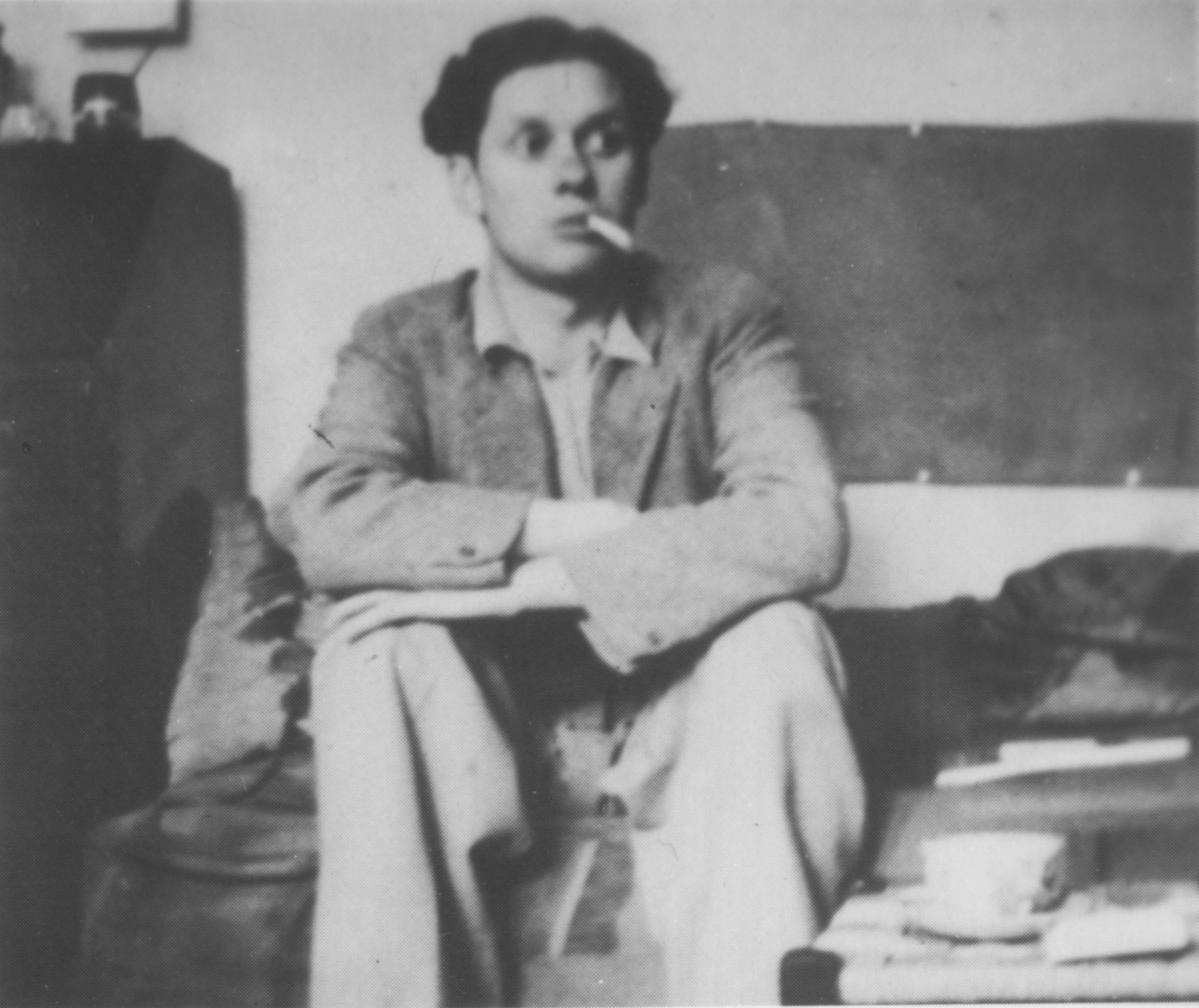 The Magical Dilemma of Victor Neuburg
The Magical Dilemma of Victor Neuburg
Jean Overton Fuller
Format: Softcover
ISBN:
£15.00 / US$24.00
Subjects: Biography/Aleister Crowley/Thelema/Magick.
The Magical Dilemma of Victor Neuburg is really two books in one:
The record of Victor Neuburg’s extraordinary journey to magical enlightenment. And the story of Aleister Crowley, the magus who summoned Neuburg to join
him in his quest.
‘The book opens with the author’s entry into the group of young poets including Dylan Thomas and Pamela Hansford Johnson. They gather around Victor Newburg in 1935 when he is the poetry editor of the Sunday Referee. Gradually the author becomes aware of his strange and sinister past, in which Neuburg was associated in magick with Aleister Crowley.
Contents: Beginnings / Mystic of the Agnostic Journal / Crowley and the Golden Dawn / Initiation / Magical Retirement / Equinox and Algeria / Rites of Eleusis / Triumph of Pan / Desert / Triangles / Moon Above the Tower / Templars and the Tradition of Sheikh El Djebel / Paris Working / The Sanctuary / Arcanum Arcanorum / Dylan Thomas
‘Those interested in Western occult history will welcome this revised and expanded edition of an important work first published in 1965.
Overton Fuller’s biography of Neuburg paints an intimate portrait of this complex character who was as much mystic as poet. A prominent figure in London’s literary bohemia in the 1930s, Neuburg encouraged such writers as Dylan Thomas, Pamela Hansford Johnson, Hugo Manning and many others, including Overton Fuller.
In his earlier days, Neuburg had been a disciple, magical partner and possibly even lover of Aleister Crowley during a period of ground-breaking magical experiments.
‘Vicky encouraged me as no one else has done,’ Dylan Thomas declared on hearing of Neuburg’s death. ‘He possessed many kinds of genius, and not the least was his genius for drawing to himself, by his wisdom, graveness, great humour and innocence, a feeling of trust and love, that won’t ever be forgotten.’ ‘ . . . there was a whiff of sulphur abroad, and all of us would have liked to know the truth of the Aleister Crowley’s legends, the truth of the witch-like baroness called Cremers, the abandonment of Neuburg in the desert.’
– Pamela Hansford Johnson
‘No dry biography this but an illuminating and compelling account of a multi-faceted personality who lived during an exciting period of occult and literary history. An absolute must-have!’
– (ME) In Prediction Magazine November 2005
—————————–
To mark the centenary of Dylan Thomas, here’s an extract from JOF’s book that narrates her first meeting with the soon-to-be-famous poet:
“We agreed to Zoists”: Dylan Thomas & the Occultist Victor Neuburg (Aleister Crowley’s lover & collaborator)
“We agreed to Zoists.
Runia wanted us to have badges, ‘so that one Zoist can recognize another, if you meet outside, or if we have provincial centres.’
There was a murmur of dissent. Some of us felt this thing was getting inflated. And we didn’t want badges. We weren’t boy scouts; just a few people who wanted to come here and sit and talk to each other on Saturday evenings.
‘All right, no badges,’ she said. ‘But it is agreed we have a name?’
It was agreed but there was no enthusiasm for the name, our feeling being for the informal. Before we left Runia made us cups of tea.
When eventually we broke up, and I stood again in the road outside, I felt I could tell my mother I had been among distinguished people. But the truth was I felt something else as well. I felt I had been in ancient Egypt and for this feeling I could find no explanation.
Not all of those who had been present on the first evening returned the following Saturday, but as I attended every week I began to know the regulars. Arriving soon after 8 (dinner at the hotel where my mother and I lived, was at 7, so it was a rush), I always found a certain number of people there already, though there was usually some time to wait until Vicky and Runia came from the inner room. It was in this waiting time that I had to find my feet, as it were among the other young ones. Nobody was ever introduced at Vicky’s. One just found out for oneself. I did not find the young men easy although they made efforts to draw me into the circle, for they assumed an acquaintance with modern poetry and political authors greater than I possessed; I could not always follow their allusions, and I had the feeling they all participated in a form of culture slightly strange to me. I was therefore grateful when a good looking young man, quiet mannered and of a more ordinarily civilized demeanour, settled himself beside me and asked, simply, ‘How did you come to Vicky’s?’
I told him about the circular letter I had received. He knew Geoffrey Lloyd had sent some out and asked, ‘What do you do when you’re not writing poems for Vicky? What’s your background, so to speak?’
I told him I had been on the stage since I was seventeen.
He said ‘Fancy our having an actress among us!’
‘What’s your name?’ I asked him.
‘William Thomas’, was what I first thought he said, but then he added, ‘It’s a special Welsh name.’
There could be nothing very special about William, and I puckered my brows.
‘You’ll never have heard it before,’ he said. ‘Nobody in England ever has. It should really be pronounced Wullam, in Welsh.’ Or was he saying ‘Dullan’?
‘It’s a special Welsh name,’ he repeated. ‘I shall have to spell it for you. D-Y-L-A-N. In Wales, it’s pronounced Dullan. But I’d been corresponding with Vicky for some time before I came to London, and when I arrived I found he had been calling me Dillan, in his mind. I thought if Vicky didn’t know how to pronounce it nobody in England would, so I decided to take it as the standard English pronunciation of my name. Otherwise I’d spend all my time telling people it was Dull and not Dill, and I think perhaps Dillan sounds more elegant than Dullan. Only Idris objects and thinks it’s frightfully fancy! Because he’s Welsh, too, and he knows! but now I’m getting even Idris trained to call me Dillan, though it’s under protest!’
‘What part of Wales do you come from?’ I said.
‘Oh, I only come from a small town. Swansea.’
Whereas I had previously felt myself to be the most naive member of a group otherwise composed of sophisticated, bohemian intellectuals, I now felt I had, vis-à-vis Dylan Thomas, at any rate, an advantage in being a Londoner. ‘I should have thought Swansea was a large town,’ I said. ‘I was near there all last summer. If you had been to the theatre at Porthcawl you would have seen me on the stage!’
‘No, I’m afraid I didn’t’ he said. ‘What a pity!’
Giving the conversation a turn he did not expect, I said, ‘Have you ever been down a mine?’
‘No.’
‘I have!’ I explained triumphantly. ‘Near Crumlin. I once played a January date in the Rhondda. Or more exactly the Ebbw Vale.’ I told him how I had persuaded the men at a pit to take me down the shaft, and how, having arrived at the bottom, I was given a lamp to hold and escorted along a passage which had been hewed through the coal to a point where it became so low that one would have had to proceed on hands and knees. I was shown a fault seam, which I felt with my fingers.
‘You have seen something in Wales which I haven’t!’ said Dylan. He explained that his home was some distance from the mining regions. He described the part of Swansea where he lived, with a detail I cannot now recall, except that it sounded salubrious and agreeable. His father was Senior English Master at the Grammar School. ‘Living where I do one doesn’t really see anything of all that,’ he said, with reference to my allusion to the coal mining (and depressed) areas. ‘Idris comes from the Rhondda,’1 he said. ‘I haven’t been into those areas.’ As though he had been slightly shamed by my adventure, he added, ‘Perhaps I ought to have done.’
‘It’s because you live there that you wouldn’t think of it,’ I said. ‘When one is touring one feels one must see everything in case one never comes again. When I was sixteen, my mother and I made a tour of Italy, Pisa, Rome, Naples, Capri, and back through Perugia, Florence and Milan. We felt we had to go into everything, even the smallest church we passed on any street. We realized we had never “done” London half as thoroughly because we took it for granted.’
I have no ‘outrageous’ sayings of Dylan Thomas to record. His conversation with me was perfectly drawing-room and unexceptional. I remember him as a polite young man. Friendly, but not at all presuming.
He told me the origins of the circle of which I now formed part. ‘First one and then another of us found our way to Vicky’s through entering into correspondence with him or something like that, and so a circle grew up around Vicky. We’re all very fond of Vicky.’ He explained that, ‘always reading each other’s names in print we began to wonder what the ones whom we hadn’t seen were like.’ So they had had the idea ‘of sending out circulars to everybody who was a contributor. He thought it had brought in some interesting people. ‘Well, it has brought you!’ Perhaps one could name some kind of a regular thing of it. ‘The only thing I don’t like is the name Zoists!’ he said.
I laughed and said, ‘It does sound a bit like protozoa, zoophytes and zoids!’
Dylan pulled a funny face.
‘We’re always called “Vicky’s children”,’ said Dylan. ‘It’s a bit sentimental, but I don’t think we shall ever be called anything else.’
It had been at the back of my mind while he was speaking that his name, as he had spelled it out, was one which I had read in the Sunday Referee in a context more important than that of the weekly prizes. I had not taken the paper regularly before I joined the circle, or I would have known the whole build-up. I said, ‘Aren’t you the winner of a big prize? I believe you’re one of the distinguished people here!’
‘It was through Vicky and the Sunday Referee that a book of my poems has been published,’ he said. He explained that a prize was offered twice yearly, part of which consisted in the publication of the winner’s poems in book form. ‘The first was awarded to Pamela Hansford Johnson. She isn’t here tonight. I was given the second of them.’ He said that Vicky had helped him pick out what he thought were the best of the poems he had written.
‘What’s it called?’
‘Just 18 Poems. It was published just before Christmas, and I think it’s doing quite well.’ He added, ‘I’m very grateful to Vicky. It’s a big thing for me. One’s first book is the most difficult to get published. Everyone says so. Now that I have one book published, it should be easier to get the next accepted, perhaps by an ordinary firm.’
My sentiment for Vicky was already so strong that I was slightly shocked.
Dylan Thomas saw it. ‘Vicky doesn’t expect us to stay with him!’ he said. ‘This is a nursery school from which we are expected to go out into the world. When we can get published elsewhere nobody is more pleased than Vicky!’
Just then the moment for which we had been waiting arrived. The door from the inner part of the house opened and our hosts came out to join us.
Vicky came straight up to Dylan and me. I did not know which of us the distinction was meant for but it gave me joy. He stood by my chair, looking down on us beamingly, and said to Dylan, ‘You’re entertaining this little lady?’
Dylan said, ‘I’ve been telling her something of the history of the Poet’s Corner.’
*********************************
Laugharne,
Carmarthenshire,
Wales
19 June 1940
Dear Miss Fuller
I haven’t heard anything from Vicky and Runia for years, until about a fortnight ago.
Then Pamela Johnson wrote to tell me that Vicky had just died. I was very grieved to hear it; he was a sweet, wise man. Runia’s address is 84, Boundary Road, NW8. At least, I suppose she is still there. I wrote her a letter, but I haven’t had a reply yet; probably she’s too sad to write.
Yours sincerely
Dylan Thomas
#occult #literarymodernism #aleistercrowley #victorneuberg #poetry #magick #mandrakeofoxford
Books of The Beast
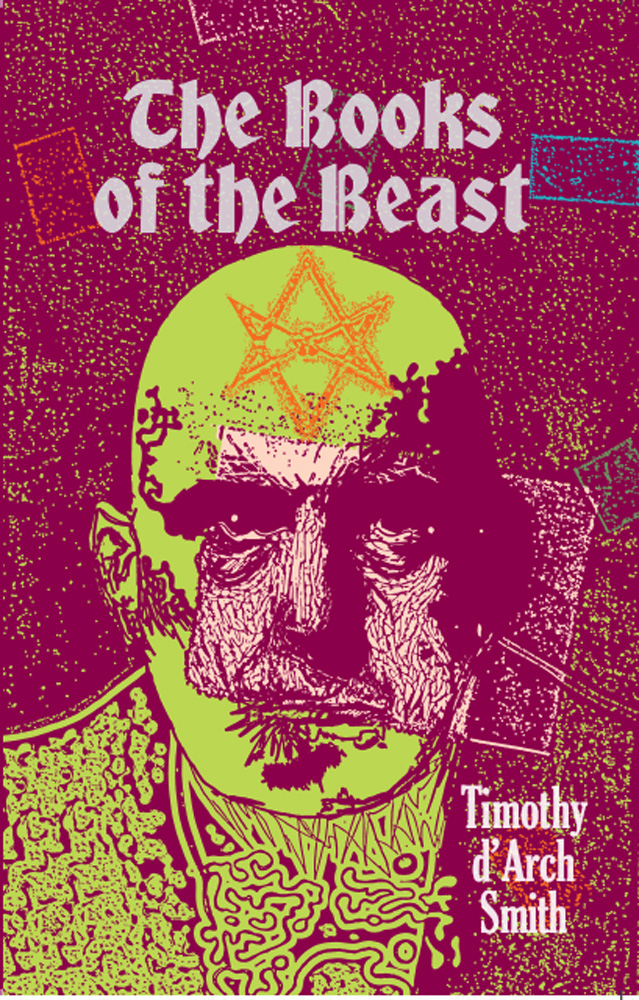
Timothy d’Arch Smith
The Books of The Beast
Timothy d’Arch Smith
Format: Softcover
ISBN 9781869928179
£15.00 / US$22.00
Subjects: Aleister Crowley/Crowleyiana/Publishing History/Antiquarian Books/Occult.
Click HERE for Kindle USA edition
Click HERE for Kindle UK edition
Timothy d’Arch Smith’s The Books of the Beast is a compelling collection of essays that delves into the intricate world of occult literature, with a particular focus on Aleister Crowley and his contemporaries. Originally published in 1987 and later expanded in a 2010 edition, this work offers both bibliographic detail and cultural insight.
Overview
D’Arch Smith, an esteemed bibliographer and antiquarian bookseller, explores the symbolic significance Crowley attributed to every aspect of his publications—from colour and paper type to pricing. The book serves as an authoritative guide to Crowley’s magical first editions, providing context and commentary that illuminate their esoteric meanings.
Contents
Beyond Crowley, the essays examine figures such as:
-
Montague Summers: A Roman Catholic priest and demonologist, whose private indulgences contrasted with his public condemnations of the occult.
-
Ralph Chubb: A poet and artist who attempted to establish a new religion centred around a boy-god, reflecting his controversial personal beliefs.
-
Florence Farr: A prominent member of the Hermetic Order of the Golden Dawn, known for her associations with literary figures like W.B. Yeats and George Bernard Shaw.
-
R.A. Caton: Publisher of the Fortune Press, noted for his interest in homoerotic literature.
The book also discusses the British Library’s Private Case collection and includes an autobiographical epilogue detailing d’Arch Smith’s experiences in the London occult scene of the 1950s and 1960s, featuring encounters with individuals like Michael Houghton of the Atlantis Bookshop, biographer Jean Overton Fuller, and musician Jimmy Page.
Tone and Style
The essays are noted for their scholarly rigour combined with a gentle humour, making complex and potentially controversial topics accessible and engaging. D’Arch Smith’s firsthand experiences and extensive research provide a unique perspective on the interplay between literature, sexuality, and the occult.
Editions and Availability
The 2010 edition, published by Mandrake, includes an additional chapter on Crowley and is available in both paperback and Kindle formats. For those interested in the intersections of esoterica, literature, and cultural history, this book offers a rich and nuanced exploration.
REVIEWS
”…one could hardly wish for a more stimulating guide…’‘ –The London Magazine
”One of the more immediately striking things about the book is its gentle humour.”– Time Out
The Books of The Beast. Timothy d’Arch Smith. (Mandrake).
The author of this collection of studies of twentieth-century occultists is a well-known antiquarian bookseller, bibliographer and reviewer with a life-long interest in esoterica and erotica. This collection has a bibliography of Crowley that gives the book its title and biographies of the Roman Catholic priest, playwright, schoolmaster, collector of homoerotic pornography, demonologist and closet Satanist, Montague Summers, the eccentric R.A. Caton, who shared Summer’s interest in young boys and was briefly his publisher, Ralph Chubb, writer, artist and pederast who tried to create a new religion based on the worship of a boy-god, and pioneering female occultist Florence Farr of The Hermetic Order of The Golden Dawn. There is also an account of Crowley’s disguised appearance as a character in Anthony Powell’s famous novel A Dance to the Music of Time (1951), one of many he made in fictional works, and a description of the private collection of erotica in the British Library. The book concludes with a fascinating autobiographical epilogue on the author’s adventures in the London occult scene of the 1950s and 1960s. These feature Michael Houghton from the Atlantis Bookshop (compared by the author to Grumpy in Walt Disney’s Snow White and The Seven Dwarfs because of his stature and demeanour!), Crowley’s forgotten biographer and cricket fan Charles Richard Cammel, who died during a Test Match at the Oval (what a way to go!), the writer and biographer Jean Overton Fuller, the Beatles (who attended a witchcraft exhibition organised by the author), and Crowley follower Jimmy Page of Led Zeppelin. Highly recommended.
The Cauldron # 136, May 2010.
Aleister Crowley A Modern Master
John S. Moore
(Biography)
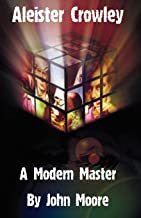
Aleister Crowley, A Modern Master
John S. Moore
Format: Softcover
ISBN:
£15.00/US$22.00
Subjects: Biography/Aleister Crowley/Magick/Thelema/Philosophy.
Click HERE for USA & AUS
Click HERE for UK
–
Aleister Crowley’s appeal on the level of popular culture has been well catered for by a number of biographies that have appeared in recent years, but the more intellectual side to him, which is equally fascinating, has not received so much serious treatment.
Crowley, A Modern Master is neither an account of his life, nor a straightforward presentation of his teaching, but an attempt to place him clearly in the context of modern ideas as well as a number of older traditions.
Extracts
Even, or even especially if you have little interest in the occult, Aleister Crowley deserves your attention. He applied his powerful intellect to engage with some of the most pressing issues of his own day, many of which remain as vital as ever. His Magick, and his Thelema, outlandish as they might at first sound, are not just fringe ideas, they offer provocative answers and solutions to many of the urgent questions that still beset us.
His message is meant for all, as he firmly states in the introduction to Magick in Theory and Practice. He challenged received opinion, which responded by cutting him out of serious history. Untangle his ideas from their bizarre sounding setting, and we can see how unjust was his exclusion. Most importantly, while received opinion has somewhat changed its character over the past sixty years it is still powerfully subverted by the life and work of this badly underrated great man.
My object is to make Crowley intelligible in a mainstream context, to bring his creative achievement more into the light of sympathetic attention, render his ideas more accessible, and his religious outlook and experience available. This involves rewriting much recent intellectual history. The object is also to make excuses for him, defending what has been criticised as the more contemptible side of his character. While my main target audience is people who already know about Crowley and are intrigued enough to want to explore the context of his ideas, I am also writing for anyone interested in modern thought who is curious to discover if I really can make a case for his importance.
The plan for this book was first conceived in 1984 as a contribution to the Fontana Modern Masters series. This was a series of paperbacks about the people who supposedly defined modernity, what is most creative and distinctive in the age in which we live in. I felt strongly that Crowley deserved a place among these assorted gurus. It was annoying, reading much of what was taken so seriously and admired, that the writings of this unique genius should be so completely disregarded. Knowing the prejudice against him I didn’t have any serious hope, but sent off a proposal all the same. I was told Crowley was not a suitable subject for inclusion. ‘From a publishing point of view’, I was told, he was ‘simply too different from the other people we have included as subjects’. This was of course to be expected. Ezra Pound, high priest of modernism, had been adamant there should be no place for the Beast, far preferring Crowley’s nemesis, Mussolini. I meant to show that Crowley is not so out of place in such company as is said.
John S. Moore
REVIEW
‘That John Moore thinks Aleister Crowley is one of the most important thinkers of the twentieth century can be in no doubt after reading what amounts to a 200 pages attempt of a rehabilitation of the great beast.
Moore is the first to admit that his book is a defence of Crowley. ”The object is to make excuses for him”, Moore asserts, ”defending what has been criticized as the more contemptible side of his character.” Moore has no interest in the simple retelling of Crowley’s life and works: pointing out that this has been done many times.Instead he aims to try to put Crowley’s thought, work and behaviour into context. In an attempt to make Crowley ”intelligible”, Moore expends many chapters in highly detailed examination of Crowley’s output. Texts and behaviour are examined in the light of ‘Romanticism’, ‘Protestantism’ and ‘Philosophy’, while what Moore describes as ‘Crowley’s sexual Stalinism’ is given an equally thorough examination.
This is not a book for those with no knowledge of Crowley or his work. John Moore expects that you will have heard of (if not be familiar with) Crowley’s main texts and, after a short but informative description of Crowley’s life, lauches the reader straight into the nitty-gritty.
If you are a devotee of Crowley and can see no wrong in him, or any of his behaviour, you will find this book greatly to your taste. I, for one, however found some of Moore’s rather blithe assertions hard to take. One such was that Crowley’s execrable behaviour towards the women in his life could be glossed over with ”His was an aristocratic path. Sex lives of true aristocrats in all their complexity are not reducible to simple formula for democratic consumption.” I’m afraid that doesn’t quite do it for me. Quibbles aside this is a really thought-provoking take on Crowley as a thinker, ego and possible guru. It highlights his huge creativity and determination to live as he believed he should, no matter the consequences: whether of drug abuse, sexual ‘addiction’, megalomania or accusations of debauchery. Well worth a place in any collection of Crowleyana.’
Pagan Dawn Samhain-Yule 2009


